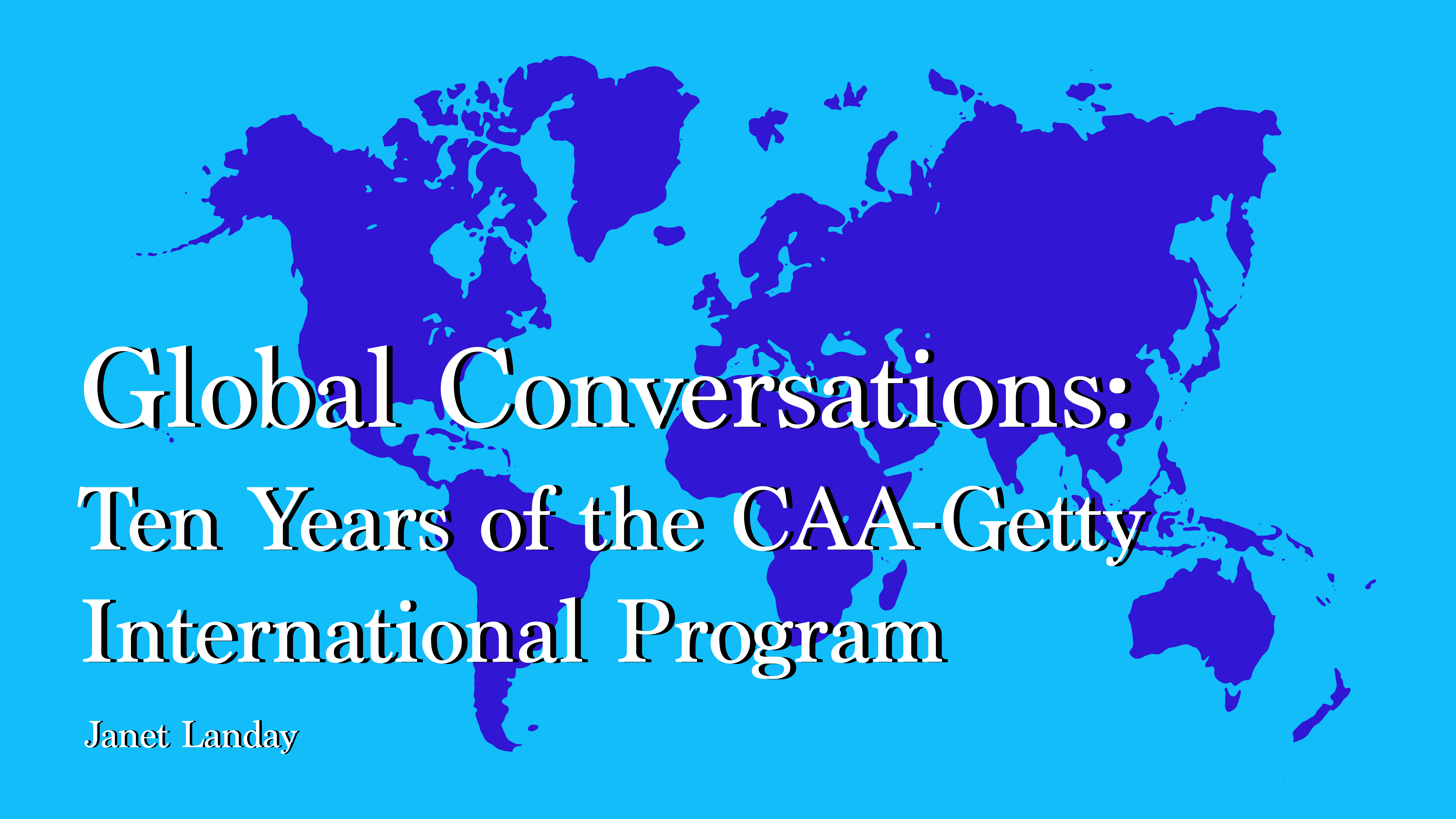Directory of CAA-Getty International Program Participants
A | B | C | D | E | F | G | H | I | J | K | L | M | N | O | P | Q | R | S | T | U | V | W | X | Y | Z
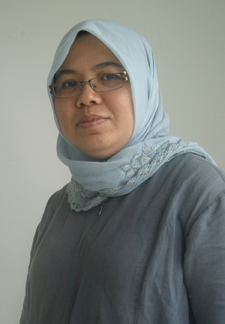
Sarena Abdullah
Malaysia, 2016, 2017, and 2019
Sarena Abdullah, who holds a PhD from the University of Sydney in Australia, is an art historian and current deputy dean for research, innovation, and community-industry engagement at the School of the Arts, Universiti Sains Malaysia. She was awarded the inaugural London, Asia Research Award by the Paul Mellon Centre (London) and Asian Art Archive (Hong Kong) in 2017. Her book Malaysian Art since the 1990s: Postmodern Situation (2018) was published by Dewan Bahasa dan Pustaka, and the version in Malay will be published in 2021. She is the coeditor of Ambitious Alignments: New Histories of Southeast Asian Art 1945–1990 (2018), published by the Power Institute and the National Gallery Singapore. She has written extensively on Malaysian art for various academic journals and platforms.
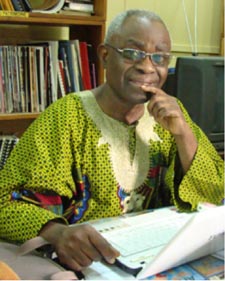
Joseph Codjovi Etienne Adandé
Benin, 2013
Joseph Adandé received a PhD in art history from the Université Paris 1 Panthéon-Sorbonne, where he focused on a comparative study of Ashante stools and Dahomey royal stools. Since 1986, he has taught art history at the Université d’Abomey-Calavi and at the Institut Supérieur d’Information, de Communication et des Arts (ISICA), at the University of Lomé, Togo. He defended a Doctorat d’Etat in 2012 on “Humor in Traditional and Contemporary African Arts” at the University of Lomé. Adandé has taught and lectured in universities in Italy and Germany, and served as a resource person for the School of African Heritage in Porto-Novo. He received a fellowship at the Metropolitan Museum of Art, New York, to write a book on appliqué cloth in West Africa. He accepted a three-month invitation to the Institut national d’histoire de l’art in Paris in late 2012. He is currently active in launching a school of fine arts at his university.

John Tokpabere Agberia
Nigeria, 2018
John Tokpabere Agberia is an artist and art historian and a curator. Graduating in 1983 from the University of Benin, Benin City, he began his academic career as a graduate assistant at the University of Uyo in 1985. He received an MA in art history at the University of Ibadan in 1988 and a PhD from the University of Port Harcourt in 1998. Agberia has received several distinguished fellowships from the United Kingdom, including the A. G. Leventis Fellowship at School of Oriental and African Studies (SOAS), University of London (1995), the Sainsbury Research Fellowship of Sainsbury Research Unit at the University of East Anglia (1997), and the University of Oxford’s Titular Fellowship at the Pitt Rivers Museum (2009). At Oxford Pitt Rivers, he worked with Jeremy Coote, the joint head of collections, and began studying museums, cultural heritage, and curating. He is an active curator in Nigeria and a professor of fine arts and design at the University of Port Harcourt, Nigeria.
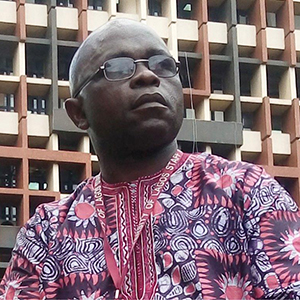
Abiodun Akande
Nigeria, 2016, 2017, 2020
Abiodun Akande is a senior lecturer at the University of Lagos, Nigeria, where he teaches painting, art education, and art history. Akande earned a BA in fine arts from the Obafemi Awolowo University, and an MA and a PhD in the visual arts of Africa from the Institute of African Studies, University of Ibadan, Nigeria. In 2013 he participated in the first Basel Summer School in African Studies at the University of Basel in Switzerland and a symposium hosted by the School of Arts at Peking University. Akande participated in the CAA-Getty International Program in 2016 and returned in 2017 for the reunion program. His research focuses on knowledge systems in the art and cultural practices of indigenous communities in Nigeria. A recent publication, “Ará òrun kìn-ìn kin-in: Òyó-Yòrùbá egúngún Masquerade in Communion and Maintenance of Ontological Balance” (Genealogy, 2019), explores the Yòrùbá belief in life after death, and how the powers and spirits of the deceased are harnessed for the benefit of the living.
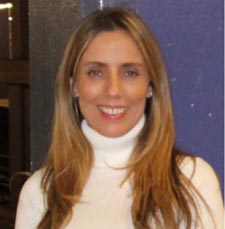
Priscila Arantes
Brazil, 2013
Priscila Arantes is a cultural critic, curator, professor, and director. She has been director and curator of Paço das Artes (State Secretariat of Culture/SP/Brazil) since 2007 and a professor at Pontifícia Universidade Católica de São Paulo (Pontifical Catholic University) since 2002. Arantes received her PhD in communication and semiotics from Pontifícia Universidade Católica and conducted postdoctoral research in the Department of Visual Art at Penn State University. Between 2007 and 2011 she was associate director of the Museum of Image and Sound in São Paulo, and in 2010 she was a member of the São Paulo Art Biennial’s Editorial Council of the magazine Polo de Arte Contemporânea . Arantes has published widely about digital aesthetics and also curated exhibitions at Paço das Artes, notably Assim é, se lhe parece (Right You Are! If You Think So, 2011) and Projeto 5X5 (2012). Her research interests include contemporary art, Brazilian and Latin American art, and postcolonial studies.

Rael Artel
Estonia, 2014
Rael Artel is a curator of contemporary art and, since April 2013, director of the Tartu Art Museum in Estonia. She graduated from the Institute of Art History at the Estonian Academy of Arts in 2003 and participated in the De Appel Curatorial Training Programme in Amsterdam in 2004–5. Since 2000 she has curated projects in Estonia, Warsaw, Lisbon, Amsterdam, and New York. Artel is the artistic director of the festival of contemporary art in Tartu called ART IST KUKU NU UT. She is also the initiator and moderator of Public Preparation, an international platform for network-based communication and collective research. Recent exhibitions include Lost in Transition (Contemporary Art Museum of Estonia, Tallinn, 2011); Art Must Be Beautiful: Selected Works by Marina Abramović (Tartu Art Museum, 2011); Life in the Forest (Arsenal Gallery, Bialystok, Poland, 2011); After Socialist Statues, KIM? (Contemporary Art Centre, Riga, Latvia, 2011); Explosion in Pärnu (Kumu Art Museum, 2012); and Marge Monko: How to Wear Red? (Tartu Art Museum, 2013).
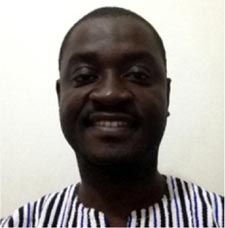
Eric Appau Asante
Ghana, 2014
Eric Appau Asante is a senior member and lecturer of art history at the Kwame Nkrumah University of Science and Technology, Kumasi, Ghana. He earned a PhD in art history (African art and culture) from the same university, where he currently teaches courses in the history of African art and culture, the philosophy of African art and culture, research methodology, the and history of global art. For the past seven years Asante has concentrated his efforts on research and teaching people about history and symbolism in African art, as well as art and memorial culture. In addition to these subjects, he is interested in gender and art production, philosophies and educational connotations of African art, and wood culture and art production. In January 2013 he became Ghana’s coordinator for the International Wood Culture Society.
Salam Attasabri
Iraq, 2012
Salam Attasabri is the director of the National Museum of Modern Art, Iraq.

María Isabel (Marisa) Baldasarre
Argentina, 2016
María Isabel Baldasarre currently serves as national director of museums of the Ministry of Culture of Argentina, professor in the MA program of Argentinian and Latin American art history at the Universidad Nacional de San Martín (Buenos Aires), and researcher in the Consejo Nacional de Investigaciones Científicas y Técnicas (CONICET). She received her BA and PhD in art history from the Universidad de Buenos Aires. She has published and contributed to several books about collecting and served as academic coordinator of the catalogue raisonné of the National Museum of Fine Arts, Buenos Aires. Her articles have appeared in academic journals published in the United States, Mexico, Brazil, and Italy. She has been a visiting professor at Universidad Autónoma de México, and a visiting scholar at the Getty Research Institute, Institut national d’histoire de l’art, Paris, and Kunsthistorisches Institut in Florence. In 2021 Ampersand House will publish her book Bien vestidos (Well-Dressed): A Visual History of Fashion in Buenos Aires 1870–1914.

M. P. Sudarshana Bandara
Sri Lanka, 2013 M. P. Sudarshana Bandara is a lecturer in the Department of Fine Arts, University of Peradeniya, Sri Lanka. Trained as a painter, he received an MPhil in art history in 2009. He is currently pursuing a PhD, exploring how Eastern and Western concepts of art are used in the analysis of modern and postmodern works of art. He is particularly interested in the intersection of art, Marxism, semiotics, and the Indian concept of rasa. Bandara teaches undergraduate and graduate courses in fine arts, art history, aesthetics, and criticism. In addition to teaching, he assists and supervises research work of BA and MPhil students. The author of three academic research books and over twenty research papers, he is also an active painter, exhibiting in solo and group exhibitions in Sri Lanka and internationally.
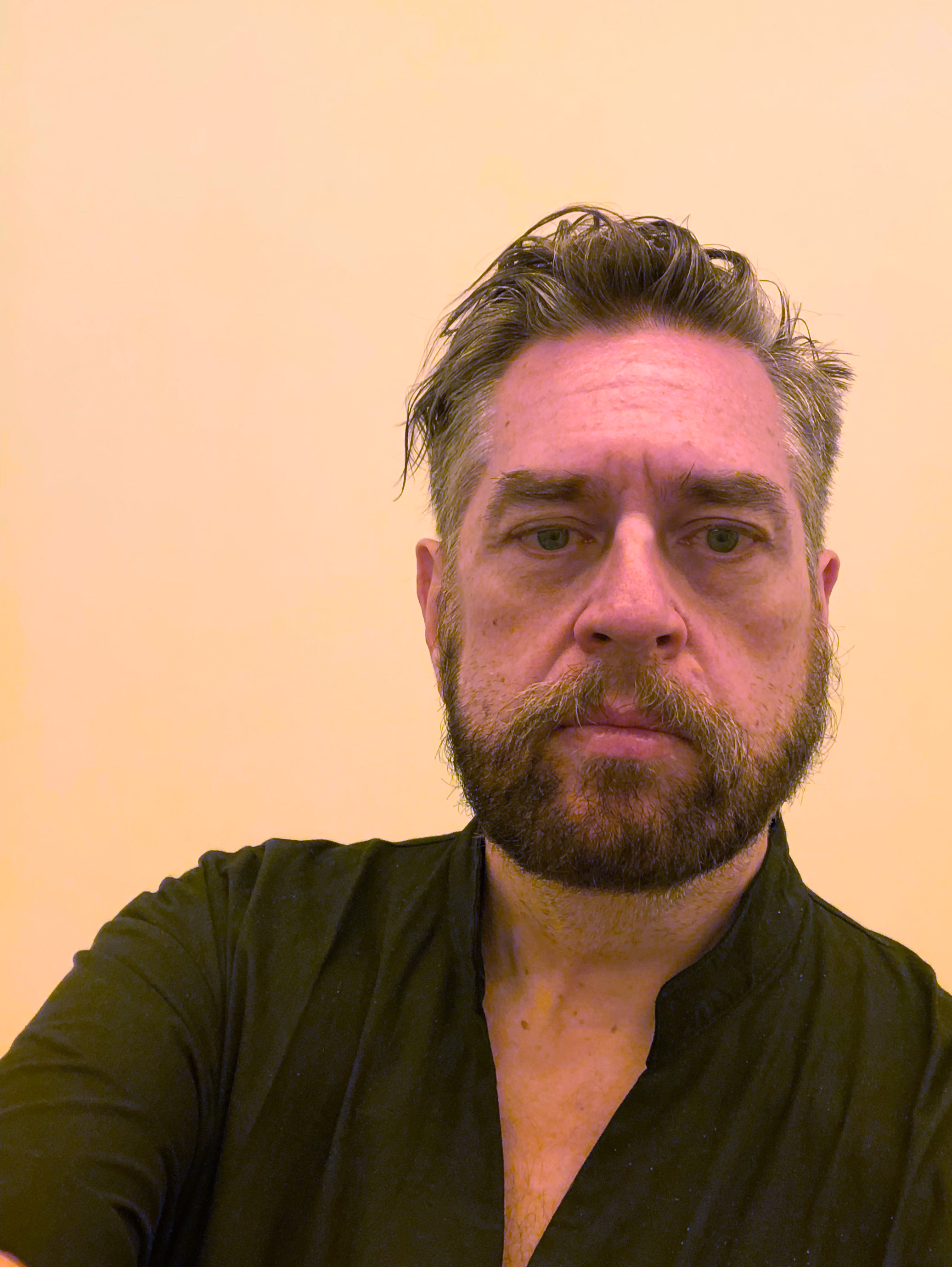
Cezar Bartholomeu
Brazil, 2014, 2018
Cezar Bartholomeu is a photographer and professor of art history at the School of Fine Arts, Universidade Federal do Rio de Janeiro (UFRJ), in Brazil. He received a PhD in visual languages from UFRJ and the École de hautes études in Paris, and completed postdoctoral research at Columbia University. From 2010 to 2017 he was the editor-in-chief of Arte & Ensaios, one of Brazil’s major art journals. His areas of research include photography as art, photography’s history and theory, and photography in Brazil. Bartholomeu exhibits widely in Brazil and Europe. His publications include Celebrações/Negociações: Fotografia Africana na coleção Gilberto Chateaubriand (Museum of Modern Art, Rio de Janeiro, 2011), “Emanation/Abjection,” in Laboratório Público de Históra da Arte Mundial (2014), “Thirty Times Failed: Valério Vieira and Experimental Photography in Brazil,” in Photography and Failure (Bloomsbury, 2017), and “Haruo Ohara: Japanese Blossom in Brazilian Culture,” in Diverse Voices in Photographic Albums: These Are Our Stories (Bloomsbury, forthcoming).

Danielle Becker
South Africa, 2016, 2021
Danielle Becker completed her master’s in art history at the University of Manchester (2010) and her PhD at the University of Cape Town (2017). She has lectured at the University of Cape Town, Stellenbosch University, Stellenbosch Academy, and a number of other institutions since 2010. She is currently a research fellow at Stellenbosch University. Her work engages in art historiography and concerns around the decolonization of South African and African art history as a discipline.
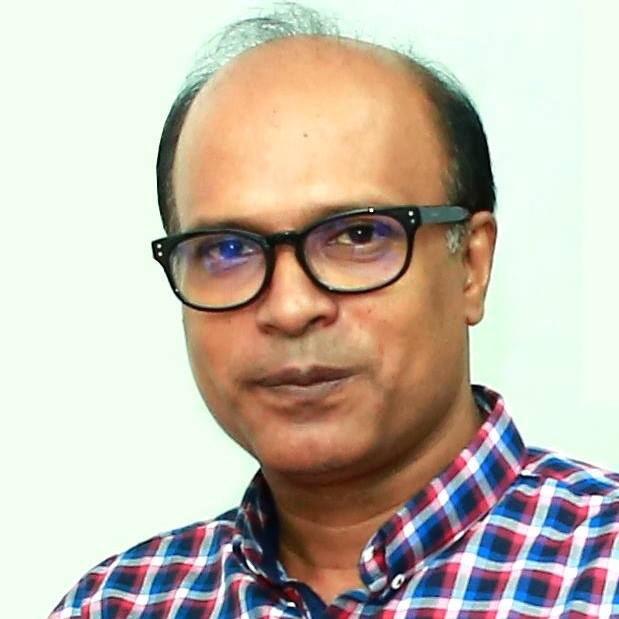
Mokammal H. Bhuiyan
Bangladesh, 2015
Mokammal H. Bhuiyan is chairman of the Department of Archaeology at Jahangirnagar University, Dhaka, Bangladesh. With a BA (honors), MA, MPhil, and PhD in archaeology, he has developed scholarly interests that also include art history, iconography, and heritage studies and management of eastern India and Bangladesh. The author of Terracotta Art of Ancient Bengal (2003), Bhuiyan has written numerous scholarly articles on art, iconography, archaeology, and heritage, as well as newspaper articles on current issues in Bangladesh. He edited Studies in South Asian Heritage, featuring contributions by leading international scholars, as well as Pratnatattva vols. 17 and 18. He serves on the Board of Advanced Studies and Academic Council of Jahangirnagar University and is a research fellow of the SAARC Cultural Centre. As a member of the Object Identification Committee, Department of Archaeology, Government of Bangladesh, he has been actively involved in researching the vernacular architecture of Narsingdi, Bangladesh, and conducting a comparative study between Buddhist stone sculptures found in Mainamati, Bangladesh, and those in Tripura, India.

Laris Borić
Croatia, 2014, 2017
Laris Borić is an associate professor in the Department of the History of Art, University of Zadar, Croatia, where he teaches early modern art and architecture in Europe and Croatia in particular. His scholarly interests and publications are focused primarily on questions of permeation influences in artistic and architectural production, especially sculpture and architecture, in towns of the Adriatic rim from the fifteenth to the seventeenth centuries. He is currently researching projections of individual and collective identities embodied in public and private commissions within early modern Venetian dominion. Borić is also involved in revisions to the art history curricula in Croatian universities, pertaining to definitions for the field and the application of learning outcomes in various levels of art history education. He is currently the editor of the peer-reviewed journal Ars Adriatica.
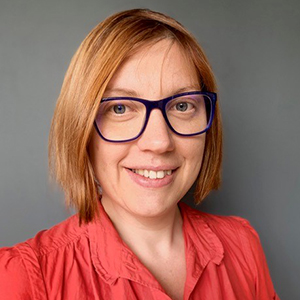
Irene Bronner
South Africa, 2020
Irene Bronner is a senior lecturer with the South African Research Chair in South African Art History and Visual Culture, Faculty of Art, Design and Architecture, University of Johannesburg, South Africa. Her doctorate (DLitt et Phil), for a thesis titled “Representations of Domestic Workers in Post-Apartheid South African Art Practice,” was conferred by the University of Johannesburg in 2016. She then held a three-year postdoctoral research fellowship with the same institution, during which time she received a Postdoctoral Research Fellows’ Excellence Award. Her research interests center on feminist studies in the visual arts, with a focus on contemporary southern Africa. She works principally with feminist, queer, and postcolonial cultural theory, as well as issues of memory, affect, gender, and the aftermath of trauma. She has published in local and international journals, recently in Woman’s Art Journal and Textile: Journal of Cloth and Culture.
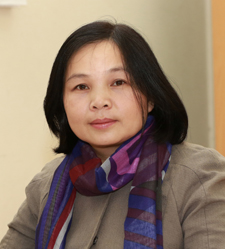
Bùi Thị Thanh Mai
Vietnam, 2016
Bùi Thị Thanh Mai is a researcher at the Vietnam National Institute of Culture and Arts Studies, where she also received her PhD in art history. She is also a lecturer in graduate art history at the Vietnam University of Fine Arts, Hanoi. Specializing in modern and contemporary Vietnamese art, with a larger interest in lacquer painting and contemporary art, Bùi has published widely in Southeast Asia and has presented papers at conferences both local and international. She has also served as a vice director of the Vietnam Museum of Fine Arts.
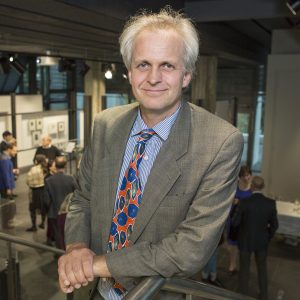
Richard Bullen
New Zealand, 2019
Richard Bullen is an associate professor of art history at the University of Canterbury, New Zealand. He graduated with a PhD from the University of Otago in 2003. Bullen’s principal areas of research are Japanese aesthetics and East Asian art collections in New Zealand. During his years living in Japan, he studied tea ceremony and calligraphy and has since published on aspects of tea ceremony aesthetics. With James Beattie he recently completed a major publicly funded project to document New Zealand’s largest collection of Chinese art, the Rewi Alley Collection at Canterbury Museum. Their website catalogues all fourteen hundred objects in the collection: http://www.rewialleyart.nz. Together, they also have produced a number of publications, including New China Eyewitness: Roger Duff, Rewi Alley and the Art of Museum Diplomacy (2017), and cocurated three exhibitions. Bullen is currently working on art made in World War II by Japanese POWs held in Australasia.
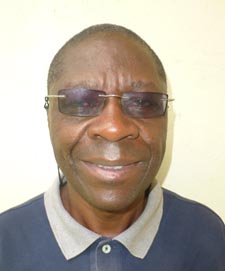
Eddie Butindo-Mbaalya
Uganda, 2014
Eddie Butindo-Mbaalya teaches art history, theory, criticism, and education in the Department of Art and Industrial Design at Kyambogo University in Kampala, Uganda. With degrees in art history, art education, and fine arts, he is currently completing his PhD at Makerere University with a dissertation on contemporary public art in Uganda. Butindo-Mbaalya is especially interested in the complexity behind commemorative monuments and the debate about their role in constructing national collective memories. As an artist, Butindo-Mbaalya is represented in the collection of the Weltkulturen Museum (World Cultures Museum) in Frankfurt, Germany. He has written about the art and architecture of recreational facilities in Uganda and also designed a logo for his country’s National Agricultural Advisory Services as a World Bank–funded project.
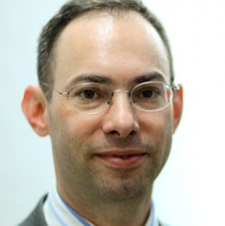
Felipe Soeiro Chaimovich
Brazil, 2018
Felipe Soeiro Chaimovich was born in Santiago, Chile, and lives in São Paulo, Brazil. He earned a PhD in philosophy from the University of São Paulo and is a professor of art history, aesthetics, and art criticism at the Fundação Armando Álvares Penteado, as well as the chief curator of the Museum of Modern Art, both in São Paulo. He has three areas of academic research: mirrors as the origin of contemporary art, the confusion between gardens and nature in the ecological debate, and the aesthetics of taste and table manners. He has curated São Paolo’s International Garden Festival at Ibirapuera Park (2010) and Encounters of Art and Gastronomy at the Museum of Modern Art, São Paulo (2012). Chaimovich is currently finishing a book on the origins of contemporary art that explores optics and the invention of perspective, Versailles, the relationship between mirrors and paintings, and the emergence of a new, self-reflexive working process in early twentieth-century art.
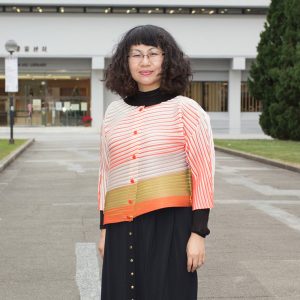
Pedith Chan
Hong Kong, 2019, 2020
Pedith Chan is an assistant professor of cultural management in the Faculty of Arts at the Chinese University of Hong Kong. She received her PhD in Art and Archaeology from SOAS (School of Oriental and African Studies), University of London, where she also spent the 2020-21 academic year as a senior lecturer in Asian Arts and Cultures. Her research interests focus on the production and consumption of art and cultural heritage in modern and contemporary China. Recent publications include The Making of a Modern Art World: Institutionalisation and Legitimisation of Guohua in Republican Shanghai (Brill, 2017), Hong Kong Impressions (CUHK, 2020), “Picturing Mount Yandang: The Travel Albums and Landscape Aesthetics of Yu Jianhua” (Burlington Magazine, 2020), “Learning from Nature: Modern Tourism and Site-Specific Landscape Painting” (National Palace Museum, Taipei, 2020), and “In Search of the Southeast: Tourism, Nationalism, Scenic Landscape in Republican China” (Twentieth-Century China, 2018). She is currently researching the making of scenic sites in modern China.
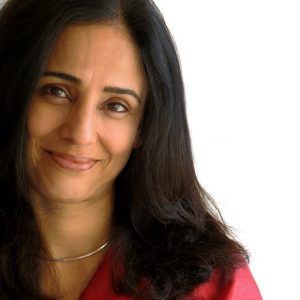
Swati Chemburkar
India, 2019
Swati Chemburkar is an architectural historian who directs and lectures in a diploma course on Southeast Asian art and architecture at Jnanapravaha, an art institute in Mumbai. She is also a visiting lecturer in the Southeast Asian art diploma program at the School of Oriental and African Studies (SOAS), London, and its Summer Schools in Southeast Asia. Chemburkar’s work focuses on eighth- through twelfth-century Southeast Asia, particularly the relationships between text, rituals, art, architecture, and cross-cultural exchanges in maritime Asia. She has edited Art of Cambodia: Interactions with India (Marg, 2016) and contributed papers to journals and publications including the recent “Khmer Empire and Southeast Asia,” in Sir Banister Fletcher’s Global History of Architecture, 21st ed., vol. 1 (Bloomsbury, 2019); “Visualising the Buddhist Mandala: Kesariya, Borobudur and Tabo,” in India and Southeast Asia: Cultural Discourses (Cama Oriental Institute, 2017); and “Pāśupata Sect in Ancient Cambodia and Champa” (coauthored), in Vibrancy in Stone: Masterpieces of the Đà Nẵng Museum of Cham Sculpture (River Books, 2017).
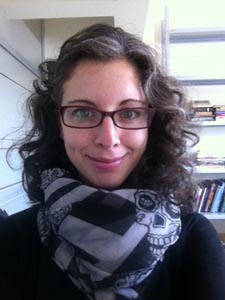
Josefina de la Maza Chevesich
Chile, 2014
Josefina de la Maza Chevesich studied art history and theory at Universidad de Chile before receiving her PhD in art history and criticism from Stony Brook University, New York, in 2013. Her academic interests revolve around the development of Chilean and Latin American art of the long nineteenth century, the definition of pictorial genres, the emergence of fine-arts academies and museums, and the impact of authoritarian regimes on art history. De la Maza’s dissertation, “Contesting Nationalism: Mamarrachos, Slave-Pieces, and ‘Masterpieces’ in Chilean Nineteenth-Century Painting,” explores the development of Chilean painting in the 1880s. Using the notion of mamarracho (bad or passé art), her work explores the emergence of official and unofficial discourses organized around Chilean painting in the midst of the War of the Pacific (1879–83), the constitution of the Museo Nacional de Bellas Artes, and the official actions developed to preserve and promote “national art” in Europe. She is currently an assistant professor in the Department of Art at Universidad Alberto Hurtado in Santiago, Chile.
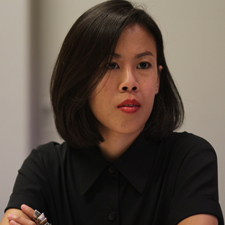
Thanavi Chotpradit
Thailand, 2018
Thanavi Chotpradit is a lecturer in modern and contemporary Thai art history in the Department of Art History, Faculty of Archaeology, at Silpakorn University, Bangkok, Thailand, and a member of the editorial collective of Southeast of Now: Directions in Contemporary and Modern Art in Asia. She completed her PhD in art history at Birkbeck, University of London. She has contributed essays to both Thai and international scholarly journals such as Aan, Fah Diew Kan, Journal of Asia-Pacific Pop Culture, and South East Asia Research, and to art magazines as well as exhibition catalogues. In 2015–16, she participated in a cross-regional research program, Ambitious Alignments: New Histories of Southeast Asian Art. Her current research on photographs of the 6th October Massacre (1976) is funded by the Thailand Research Fund for 2019–21. Chotpradit’s areas of interest include modern and Thai contemporary art in relation to memory studies, war commemoration, Thai politics, and archival practices.
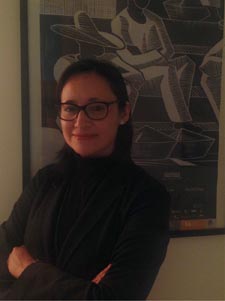
Dafne Cruz Porchini
Mexico, 2015
Dafne Cruz Porchini is a curator at the Museo del Palacio de Bellas Artes in Mexico City. From 2007 to 2011 she was the deputy director of the Museo Nacional de Arte, Mexico City. Cruz studied at the Universidad Nacional Autónoma de México, where she received a PhD in art history in 2014. Her main research interests include the history of modern exhibitions and transcultural artistic exchanges, topics she has tried to link with her curatorial practice. Her most recent publication is a critical catalogue of twentieth-century modern Mexican painting, Catálogo comentado de pintura del siglo XX (Museo Nacional de Arte–Instituto de Investigaciones Estéticas, 2013), for which she served as the academic coordinator. She was a cocurator for the exhibition Paint the Revolution: Mexican Modernism, 1910–1950, on view at the Philadelphia Museum of Art and the Museo del Palacio de Bellas Artes in 2016–17.

Katarzyna Cytlak
Poland/Argentina, 2018, 2019
Katarzyna Cytlak is a Polish art historian based in Poznań and Buenos Aires, whose research focuses on artistic creation in Eastern Europe, Latin America, and Africa. In 2012 she received a PhD from the Université Paris 1 Panthéon-Sorbonne. Between 2015 and 2017, she was a postdoctoral fellow at CONICET (the National Scientific and Technical Research Council, Argentina), and at the University of San Martín, Argentina. She studies Conceptual art, radical and utopian architecture, socially engaged art, and art theory in relation to postsocialist countries, seen through transmodern, transnational, and decolonial perspectives. She is a grantee of the University Paris 4 Sorbonne, the Terra Foundation for American Art, and the Institut national d’histoire de l’art (Paris). Selected publications include articles in Umění/Art, Third Text, the RIHA Journal, and Desbordes: Review of the Red Conceptualismos del Sur.
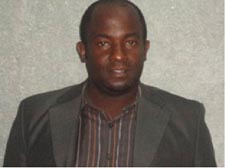
Marly Joseph Desir
Haiti, 2013
Marly Joseph Desir is a professor of art history at College La Renaissance in Port-au-Prince, specializing in European and American art. He received his PhD from the University of Arts, Haiti. In addition to the CAA-Getty grant, in 2016 he received a travel grant from the International Committee for Museums and Collections of Modern Art (CIMAM). In 2020 he was awarded a Caribbean Arts Grant from CATAPULT. His publications include “True Art and Pseudo Art: Symbolist Discourse on Autonomy and Value” (2012), “Art Ethics: Thomas Kinkade and Contemporary Art” (2011), “National Art from a Local Perspective” (2008), and “Foreign or Native, Perception and Reception of Impressionism in American Art Criticism” (2006). Desir’s research has focused on twentieth-century US history and Byzantine manuscripts from the ninth through fourteenth centuries.
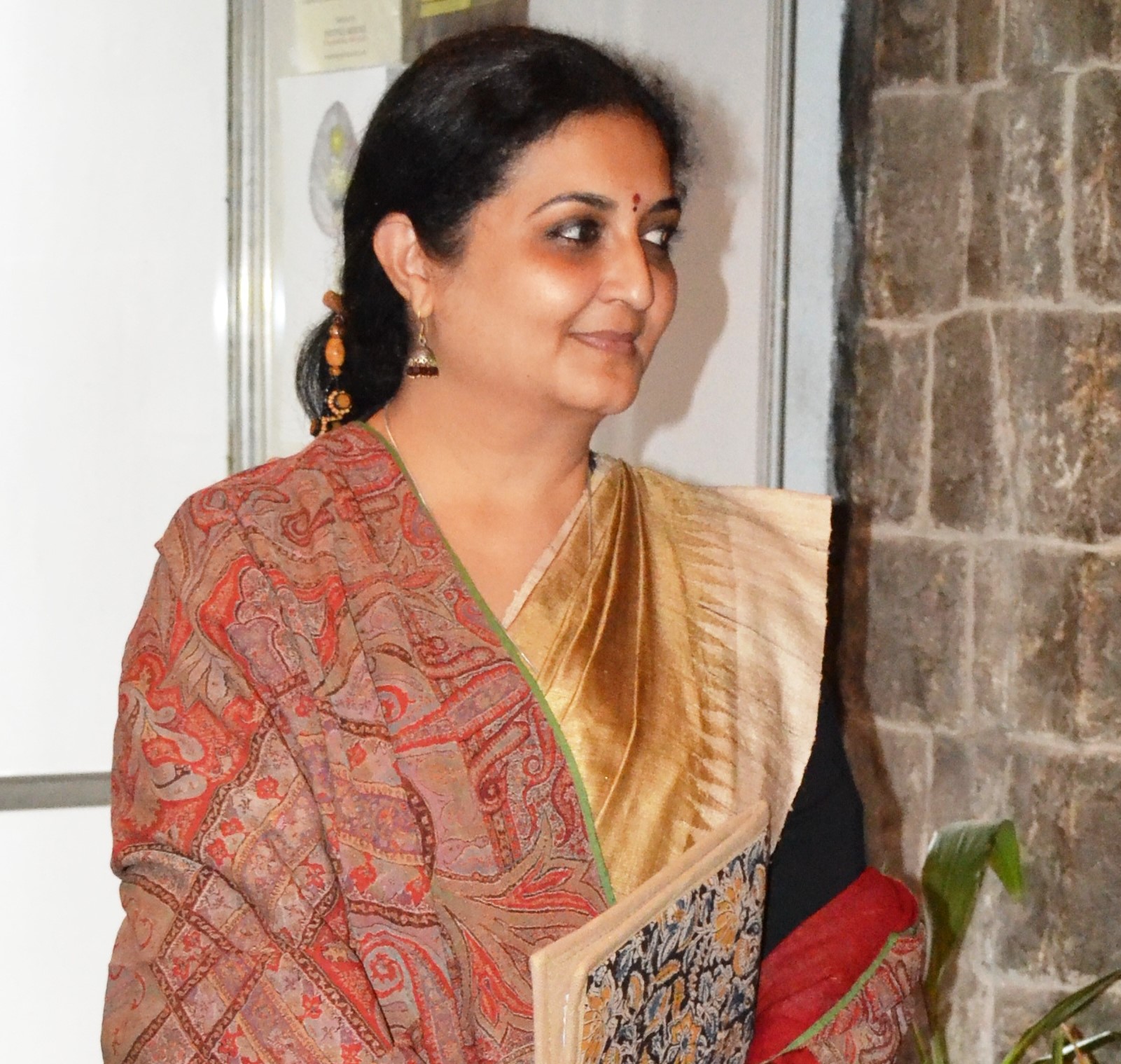
Parul Pandya Dhar
India, 2012, 2018
Parul Pandya Dhar teaches South and Southeast Asian art history in the Department of History, University of Delhi. After graduating from the University of Delhi, she pursued higher studies and doctoral research in art history at the National Museum Institute, New Delhi, and was a Humboldt postdoctoral research scientist at the Freie Universität Berlin. Her writings focus on Indian art and architecture, art historiography, and connected histories of Asian art. She has authored The Toraṇa in Indian and Southeast Asian Architecture (2010), edited Indian Art History: Changing Perspectives (2011), and coedited Temple Architecture and Imagery of South and Southeast Asia (2016), Asian Encounters: Exploring Connected Histories (2014), and Cultural Interface of India with Asia: Religion, Art and Architecture (2004), besides contributing several research papers. She has also been a performing artist for several years and is an alumna of Kalakshetra, Chennai.
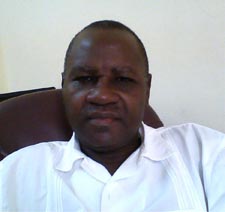
Boureima Tiékoroni Diamitani
Burkina Faso, 2015
Since 2001, Boureima Tiékoroni Diamitani has been the executive director of the West African Museums Programme, based in Ouagadougou, Burkina Faso. From 1989 to 1993, he served as the director of cultural heritage and museums of Burkina Faso and then as a consultant to the World Bank. Diamitani received his PhD in art history from the University of Iowa in Iowa City and is a specialist in the art of the Senufo people. He also holds a master’s degree in architecture and town planning from the African Crafts School of Architecture and Urbanism in Lomé, Togo. Diamitani was a predoctoral fellow at the National Museum of African Art, Smithsonian Institution, and a Coleman Fellow at the Metropolitan Museum of Art in New York. Among the many exhibitions he has organized is Deux Roues (Two Wheels: History of Bicycles and Motorcycles in Burkina), National Museum of Burkina Faso, 1990.
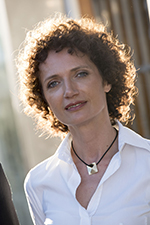
Ljerka Dulibić
Croatia, 2015, 2017
Ljerka Dulibić is a senior research associate and curator of Italian paintings at the Strossmayer Gallery of Old Masters of the Croatian Academy of Sciences and Arts, where she is responsible for the collection of Italian paintings. Her main research interests are fourteenth- through eighteenth-century Italian painting and the history of art collecting. The recipient of several grants and fellowships, most recently at the Villa I Tatti, The Harvard Center for Italian Renaissance Studies in 2015 and the RSA/Kress Travel Grant in 2016, she has coauthored several books and published journal articles and conference papers in Croatia and abroad. Currently, she is the principal investigator for Croatia in the transnational collaborative research project Transfer of Cultural Objects in the Alpe Adria Region in the 20th Century (TransCultAA), funded by the joint research program HERA (Humanities in the European Research Area).
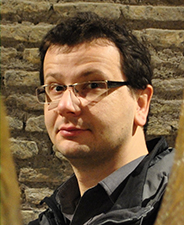
Davor Džalto
Serbia/Sweden, 2013, 2017
Davor Džalto is professor of religion and art at University College Stockholm, and president of the Institute for the Study of Culture and Christianity, Belgrade. He received his PhD from the University of Freiburg, Germany. His research focuses primarily on the exploration of human freedom and creativity, as metaphysical, political, and aesthetic concepts. In his academic career he has taught at numerous European and American universities, in the fields of religious and peace studies, theology, art history and theory, aesthetics, and critical theory. He has authored and edited fifteen books and published over one hundred scholarly articles and essays. Džalto is also an artist, working primarily in the medium of painting.
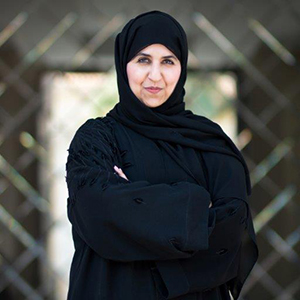
Eiman Elgibreen
Saudi Arabia, 2020
Eiman Elgibreen is an artist and an assistant professor of art history at the Princess Nourah bint Abdulrahman University in Riyadh, Saudi Arabia. She obtained a PhD in art history from the University of Sussex (UK) for research on her thesis, “Image Making: Representations of Women in the Art and Career of Safeya Binzagr 1968–2000.” Since 2011 Elgibreen has also been a freelance writer for the daily newspapers Al-Riyadh and Al-Jazirah, and an art consultant for organizations concerned with preserving the legacy of Saudi pioneer artists such as Darat Safeya Binzagr (a museum devoted to the artist’s work), and Saudi Arts House (a family foundation devoted to the work of Mohammed Alsaleem). In addition, she has curated a number of art exhibitions, including the Saudi National Pavilion at the 58th Venice Biennale, 2019. Elgibreen is interested in exploring the forgotten and/or misrepresented aspects of Saudi and Arab culture through her research and her art. A goal of her work is to encourage acceptance of cultural differences.
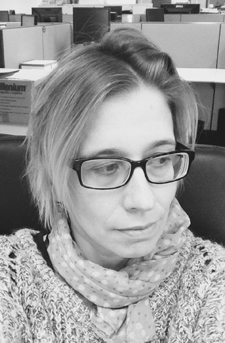
Heloisa Espada
Brazil, 2016
Heloisa Espada received a PhD in art history and art criticism from the School of Communications and Arts at the University of São Paulo in Brazil in 2011. She studies Brazilian art after World War II, with a special focus on geometric abstraction and photography. In 2014 Espada began postdoctoral studies at her university’s Museum of Contemporary Art, where she is researching the origins of Concrete art in the city, supported by a grant from the Coordenação de Aperfeiçoamento de Pessoal de Nível Superior, a Brazilian government agency. Espada is the author of Hércules Barsotti (Folha de São Paulo, 2013), Geraldo de Barros e a fotografia (Instituto Moreira Salles and Edições SESC, 2014), and Monumentalidade e sombra: O centro cívico de Brasília por Marcel Gautherot (Annablume, 2016). Since 2008, she has been the head of visual arts at the Instituto Moreira Salles, where she is also a researcher and curator.

Ildikó Gericsné Fehér
Hungary, 2016, 2018
Ildikó Gericsné Fehér received an MA and a PhD in art history from Eötvös Loránd University in Budapest, Hungary. An associate professor in the Department of Art History at the Hungarian University of Fine Arts in Budapest, she lectures and leads seminars on Renaissance and Baroque art. She is also a consultant to the university’s conservation department. Fehér’s research interests include detached wall paintings from medieval and Renaissance Italy in the collection of the Museum of Fine Arts Budapest, and Florentine art dealers at the end of the nineteenth century. Scholarships from several foreign sources (Mellon Research Fellowship–I Tatti and Kunsthistorisches Institut in Florenz) and from Hungarian institutions (OTKA and the Balassi Institute) have supported her research. She has organized several exhibitions of Hungarian and Italian art, from the Baroque period to contemporary art. Her most significant curatorial works are exhibitions of self-portraits of Hungarian painters in the Uffizi Gallery in Florence (2013) and then in the Budapest History Museum, Hungary (2014).
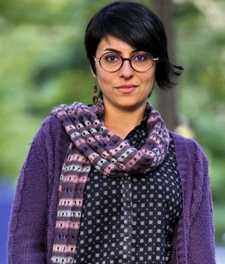
Peyvand Firouzeh
Iran/Australia, 2016
Peyvand Firouzeh specializes in the art and architecture of the Islamic world, with a focus on Iran, Central Asia, and India in the medieval period. She is particularly interested in interconnections between architecture and power, the patronage of art and architecture, cross-cultural exchanges between Iran and India, and museum studies. Firouzeh obtained her BA (2004) and MA (2007) in architecture from the Tehran University of Art in Iran and her MPhil (2011) and PhD (2015) in the history of art and architecture and Asian and Middle Eastern studies from the University of Cambridge in England. She was the acting curator of Islamic collections from Iran, Central Asia, and India at the British Museum in London in 2014–15. Firouzeh was a fellow of art histories and aesthetic practices (2015–16) at the Forum Transregionale Studien and Museum für Islamische Kunst in Berlin, where she worked on a new project, “Depicted Legitimacy: Sufi-Sultan Encounters in the Visual and Textual Cultures of South Asia.”
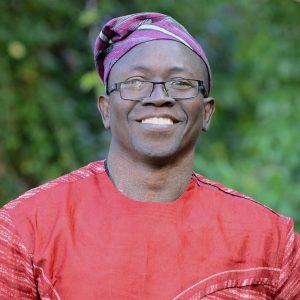
Stephen Fọlárànmí
Nigeria, 2019
Stephen Fọlárànmí is an artist and PhD associate professor of art history in the Fine Arts Department, Rhodes University, South Africa. His research interests include Yorùbá art studies/African mural art and architecture. His articles have been published in journals, in conference proceedings, and as chapters in five books. He was a recipient of the first Höffmann-Dozentur für Interkulturelle Kompetenz at University of Vechta, Germany (2008–9). Fọlárànmí was a recent recipient of an ACASA Travel grant (2020). He is currently on leave from Ọbáfẹ́mi Awólọ́wọ̀ University, Ilé-Ifẹ̀, Nigeria.

Federico Freschi
South Africa/New Zealand, 2012, 2021
Federico Freschi (BAFA and PhD, University of the Witwatersrand), is professor and head of college of Te Maru Pūmanawa/Creative Practice and Enterprise at the Otago Polytechnic, Dunedin, New Zealand, and was formerly executive dean, Faculty of Art, Design and Architecture, University of Johannesburg, South Africa. His research focuses on the intersections of identity, politics, and imaginaries of belonging in art, design, and architecture. Widely published, Freschi has curated several exhibitions, notably as the South African curator of the first exhibition of Henri Matisse’s work on the African continent. He is currently coediting a book entitled The Politics of Design: Privilege and Prejudice in Aotearoa New Zealand, Australia, and South Africa (Otago Polytechnic Ltd. Press, 2021). He was formerly a vice president of the Comité International d’Histoire de l’Art (CIHA) and continues to serve on numerous professional associations. In addition to his academic career, Freschi is an accomplished baritone who continues to perform on the concert and opera stage.
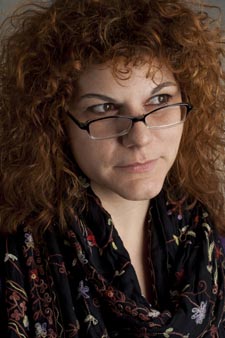
Katerina Gadjeva
Bulgaria, 2014
Katerina Gadjeva received a PhD in art history from the National Academy of Arts in Sofia, Bulgaria. She studies the history and theory of photography, in particular the concept of “visual propaganda” and the role of photography in socialist ideology in the USSR and Bulgaria. In 2012 she published a monograph on the subject, entitled Between Desire and Reality: Photographic Illustrations in Bulgarian Periodicals 1948–1956. Gadjeva is an assistant professor at the Institute of Art Studies, Bulgarian Academy of Science, Sofia, and a lecturer in the New Bulgarian University and St. Kliment Ohridski University, Sofia. She also works with young Bulgarian artists who are interested in alternative photographic processes.
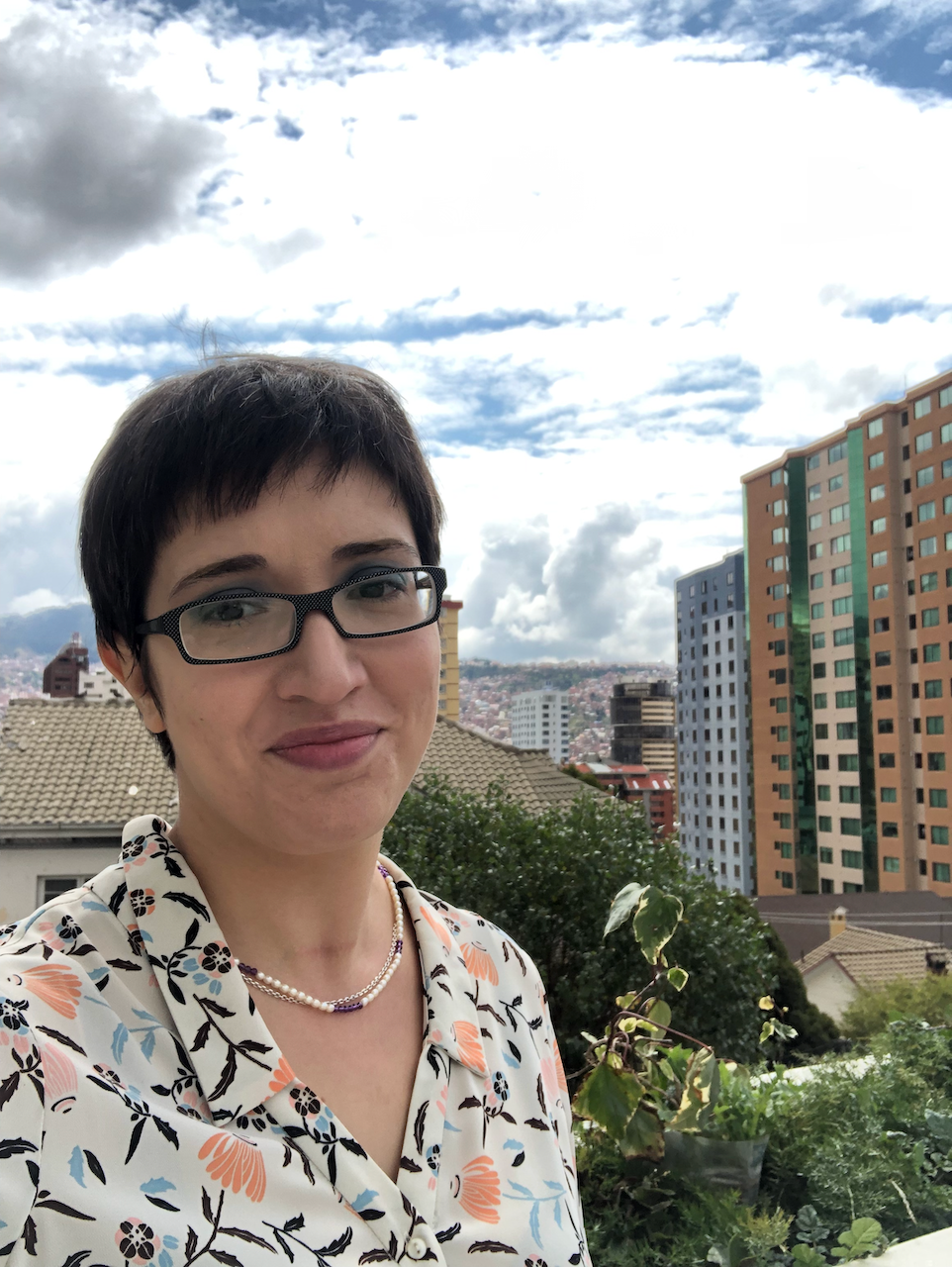
Georgina G. Gluzman
Argentina, 2015, 2017, 2021
Georgina G. Gluzman is a tenured researcher at the National Scientific and Technical Research Council (CONICET) in Argentina. She received her PhD in art history from the Universidad de Buenos Aires in 2015, having previously received an undergraduate degree in art history at the same university. Gluzman’s work focuses on the art of nineteenth- and early twentieth-century Argentine women artists. Her research has been supported by the Getty Foundation and the Institut national d’histoire de l’art. She is the author of Trazos invisibles: Mujeres artistas en Buenos Aires (1890–1923), published in 2016.
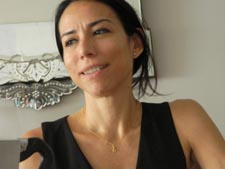
Rosa Gabriella de Castro Gonçalves
Brazil, 2012, 2017
Rosa Gabriella de Castro Gonçalves is an associate professor of art theory and aesthetics at the Universidade Federal da Bahia, Brazil. Gonçalves studied at the University of São Paulo, where she received a PhD in philosophy with a thesis on Immanuel Kant, Clement Greenberg, and formalism in visual arts. In 2011 she was a visiting scholar in the Department of Art and Art History at Stanford University. In 2013 she was awarded a Getty Library Research Grant and developed a project about the Greenberg Papers in the special collections of the Getty Research Institute. Her main research interests include modernism, modern art, and criticism in the 1960s and 1970s. She participated in the CAA-Getty International Program in 2012.

Richard Gregor
Slovakia, 2013, 2017, 2021
Richard Gregor is the director of the Peter Michal Bohúň Gallery in Liptov, Slovakia. A historian, curator, and art critic who studied at the University of Trnava, Slovak Republic, and Charles University in Prague, he worked as chief curator at Nitra Gallery and Bratislava City Gallery and served as a consultant at the Ministry of Culture of the Slovak Republic. Founder of the journals Dart (1999) and Jazdec/Rider (2009), in 2013 he served as the vice president of the Slovak Section of the International Association of Art Critics (AICA) and coauthored and co-organized the XLVI AICA International Congress in Slovakia. Gregor has curated more than thirty exhibitions at home and abroad, and has received grants to conduct research in the United States, Austria, the United Kingdom, Denmark, Germany, and Israel. His book Haberernová’s Eye: Post-Informal Figuration in Slovak Visual Art of the 1960s was published in 2013. Between 2014 and 2016, Gregor worked as the director and chief curator at Dom umenia/Kunsthalle Bratislava.
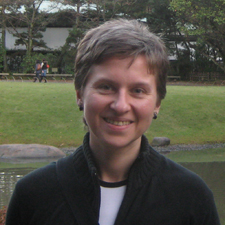
Anna Guseva
Russia, 2018
Anna Guseva is an associate professor in the School of History, Faculty of Humanities, National Research University Higher School of Economics (Moscow), where she has been a faculty member since 2014. She also directs a master’s program, History of Art Culture and the Art Markets, in the same department. Her research interests span both art and urban history in Russia and Asia in relation to food and rural history. Guseva graduated from the Lomonosov Moscow State University with a degree in art history in 1998 and received her PhD in architecture from the University of Tokyo in the Fujimori-Muramatsu Lab in 2011. She has organized architectural exhibitions as an independent curator, including My Melnikov (2013) and Environmentally Friendly Japanese Architecture: Taira Nishizawa Architects (2013), both at the Moscow Architectural Institute, and the latter also at the House of Architects in Nizniy Novgorod. Guseva also writes reviews for professional journals and trade publications on architecture and Asian art.

Negar Habibi
Iran/France, 2019
Negar Habibi is an art historian, a lecturer in Islamic and Iranian art history, and a Soudavar Foundation Fellow at the University of Geneva, Switzerland. Her research focuses principally on paintings from early modern Iran. Adopting a multidisciplinary approach, her academic work centers on the artist’s career and life, the authenticity of the artist’s signature, gender issues, and artistic patronage. She has published several articles on the art and artists of late seventeenth-century in Iran, and her book ʿAli Qoli Jebādār et l’occidentalisme safavide: Une étude sur les peintures dites farangi sāzi, leurs milieux et commanditaires sous Shah Soleimān (1666–94) was published by Brill in 2018.
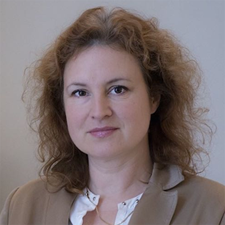
Markéta Hánová
Czech Republic, 2018
Markéta Hánová graduated from the Charles University in Prague with a PhD in 2008. Since 2000 she has held the position of curator of Japanese art and since 2012 director of the collection of Asian and African Art of the National Gallery in Prague. Her fields of interest include Japanese painting, ukiyo-e prints, and Japonisme. She is the author of the publication and curator of the exhibition Japonisme in Czech Art, held in Prague in 2014. Her recent research publication (2019) focused on collectors of Japanese woodblock prints in Czech lands. In collaboration with the Rietberg Museum Zurich, she has been curating the exhibition The Buddha Up Close, introducing Buddhist art from Czech and Swiss collections. She has also conducted a project to develop a new concept for the reinstallation of Asian art collections at National Gallery Prague.
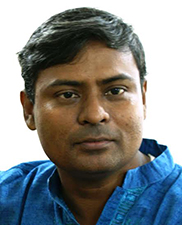
AKM Khademul Haque
Bangladesh, 2013, 2017
AKM Khademul Haque is a professor of Islamic art and architecture in the Department of Islamic History and Culture at the University of Dhaka, Bangladesh, where he also serves as an adjunct faculty member in the Department of Oriental Art. In addition to a focus on the art history of Bengal and India, he researches the international development of Islamic art and architecture. In 2007 Haque was awarded the Hamad bin Khalifa Fellowship to attend the Second Biennial Conference on Islamic Art at the Virginia Commonwealth University in Qatar. In 2010 he received the Indranee Roy Memorial Award for presenting the best paper at the 26th Annual Conference of Paschimvanga Itihasa Samsad (West Bengal History Association), held at the University of Calcutta, Kolkata, India.
Angela Harutyunyan
Lebanon, 2012
Angela Harutyunyan is an associate professor of art history at the American University in Beirut (AUB), Lebanon. She earned a PhD from the University of Manchester in 2009 and has published internationally on the autonomy of art, art and the public sphere, and cultural politics. She has curated many exhibitions, including Accretions (Ljubljana, Slovenia, 2010, and Lodz, Poland, 2011), and This Is the Time. This Is the Record of Time (Amsterdam, 2014, and AUB Art Galleries, 2015). She is the coeditor of Public Spheres after Socialism (Intellect Books, 2008) and The Book of St. Ejneb (Sharjah Biennial, Norgunk Publishers, 2011), and editor of This Is The Time. This Is The Record of the Time (AUB Press, 2016), among other publications. She is associate editor of the journal Art Margins (MIT Press). Her book The Political Aesthetics of the Armenian Avant-Garde, 1987–2004: The Journey of the Painterly Real was published by Manchester University Press in 2017.
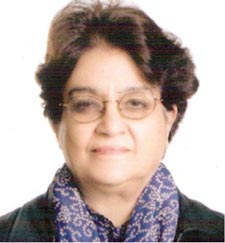
Musarrat Hasan
Pakistan, 2013
Musarrat Hasan received an MFA from the Punjab University Lahore, Pakistan, in 1961, and a PhD in art history in 1997. She is a professor, painter, and writer, also serving as a Member of Provincial Assembly, the highest legislative body of Punjab. In 1972 Hasan established a department of fine arts at Queen Mary College, Lahore. To overcome the language barriers of her students, she translated into Urdu an English-language survey of prehistoric and ancient art, a book based on the college’s curriculum in fine arts. In 1997 she received her doctorate, publishing her dissertation the following year. All of her five publications since then have been parts of an effort to compile and preserve data about contemporary art in Pakistan. She designed the course of South Asian art for PhD studies in two universities in Lahore and is currently teaching that course at the Punjab University Lahore.
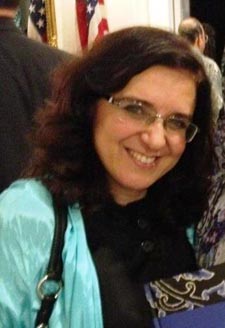
Heba Nayel Barakat Hassanein
Malaysia/Egypt, 2014
Heba Nayel Barakat Hassanein is the head of the Curatorial Affairs Department at the Islamic Arts Museum Malaysia (IAMM). A graduate of the American University in Cairo, she is a specialist in Islamic art and architecture. She holds an MA in the history of architecture from Middle East Technical University in Ankara, Turkey, and a PhD from the Oriental Institute in Moscow, Russia. As project manager at the Center for Documentation of Cultural and Natural Heritage in Cairo, Egypt, she researched and documented Cairo’s nineteenth- and early twentieth-century presidential palaces. Hassanein has also documented the early Islamic papyrus collection and the Persian illuminated manuscript collection at the Egyptian National Library in Dar el-Kotob, Egypt, and worked on the pigment analysis of early miniatures. Currently she is overseeing the refurbishment of IAMM’s permanent galleries, researching artifacts, and supervising exhibitions and accompanying catalogues for the museum’s special-exhibition galleries.
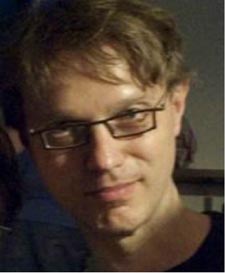
Hlynur Helgason
Iceland, 2013
Hlynur Helgason is a practicing artist and philosopher residing in Reykjavík, Iceland. He received a doctorate in media philosophy from the European Graduate School in Switzerland and currently holds the post of assistant professor in art theory at the University of Iceland, Reykjavík. His main topic of research is the temporality of contemporary art, drawing inspiration from the philosophy of Gilles Deleuze, Jean-François Lyotard, and Michel de Certeau, among others. His current topics of study include the art of Vito Acconci, Andy Warhol, and Chris Marker, as well as the Icelandic contemporary artists Libia Castro and Ólafur Ólafsson, Níels Hafstein, and Ósk Vilhjálmsdóttir.
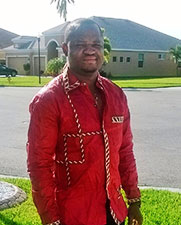
Hugues Heuman Tchana
Cameroon, 2014, 2017
Hugues Heuman Tchana is a junior lecturer in the Department of Fine Arts and Heritage Sciences at the Higher Institute of the Sahel, University of Maroua, Cameroon, where he teaches courses in museology, the history and philosophy of African art and culture, research methodologies, and the history of global art. In addition to researching symbolism in African art, he studies museums of chiefdom art, exploring why and to what purpose collections have been formed in the Grassfields region of Cameroon over the past decade.
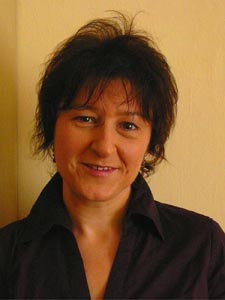
Gyöngyvér Horváth
Hungary, 2012
Gyöngyvér Horváth is an art historian and a curator currently working as an independent researcher. She obtained her PhD at the School of World Art Studies and Museology, University of East Anglia, Norwich, UK, in 2011. She was an assistant professor of art history and visual arts at Moholy-Nagy University of Art and Design in Budapest, and also taught courses at Eötvös Loránd University and Pázmány Péter Catholic University. Her research focuses on the phenomenon of visual narration and pictorial storytelling in painting and the visual arts. She has published on various topics related to Renaissance and early modern painting and illustration, contemporary art, and Hungarian modernism. She is currently examining the historiography and methodology of visual narration within art history, narratology, semiotics, and neuroscience. This research has been supported by postdoctoral research grants from Dumbarton Oaks, Harvard University, Princeton University, the Collegium Hungaricum Wien, and the Hungarian National Cultural Foundation.
Didier Houenoude
Benin, 2012
Didier Houenoude is an assistant professor of art history at the Université d’Abomey-Calavi, Benin.

Bogdan Teodor Iacob
Romania, 2013
Bogdan Teodor Iacob is the director of the Department for Theoretical Disciplines at the University of Art and Design in Cluj-Napoca, where he teaches art history and contemporary art. Between 2008 and 2011, he served as chancellor of the university. Iacob holds a BA in art history from Babes-Bolyai University in Cluj-Napoca, Romania, and an MA in socio-anthropology from the same institution. In 2011 he obtained a PhD in visual arts with the thesis “From Pathos to Cynicism: The Image of History in Modern and Contemporary Art.” Primarily concerned with contemporary artistic practices, he has published and lectured widely, including the book Offline (2010). His current focus is Romanian art criticism during the communist era.

Dária G. Jaremtchuk
Brazil, 2020
Dária G. Jaremtchuk is an associate professor of art history at the Universidade de São Paulo, Brazil, where she teaches undergraduate and graduate courses on contemporary art. As Fulbright Brazil Distinguished Chair at Emory University in 2019, she taught a course in the art history department about Brazilian contemporary visual arts. In 2018 she was a visiting scholar at Georgetown University and at Brown University in 2011. In 2010 she edited the book Arte e política: Situações (Art and politics: Situations, Alameda Editora), and in 2007 she published Anna Bella Geiger: Passagens Conceituais (Anna Bella Geiger: Conceptual passages, (C/Arte and Editora da Universidade de São Paulo). She is currently researching the relocation of Brazilian artists during the Brazilian military dictatorship of the 1960s and 1970s and the artistic exchange between Brazil and the United States at that time. She has published on this topic in journals, conference proceedings, and book chapters.

Ganiyu Jimoh
Nigeria, 2020
Ganiyu Jimoh received a PhD in art history from the University of Lagos, Nigeria, where he is also a lecturer. He is currently a postdoctoral fellow with the Arts of Africa and Global Souths research program in the Department of Fine Art at Rhodes University in South Africa. His research, which focuses on contemporary art, new media, satire, and cartoons, has attracted major awards, including the prestigious University of Lagos Best Researcher Award in Arts and Humanities in 2011. In 2015 he received a grant to conduct research for his PhD dissertation at the African Studies Center at Michigan State University. Jimoh is also a recipient of the 2019 African Studies Association Presidential Fellowship. As a scholarly writer who is also a practicing political cartoonist, Jimga (his cartoon signature) has several local and international exhibitions to his credit and currently serves as the secretary of the Cartoonists Association of Nigeria.
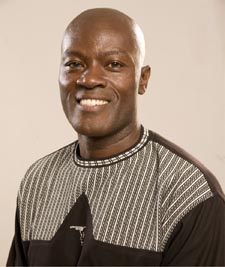
Angelo Kakande
Uganda, 2015
Angelo Kakande is a senior lecturer and head of the Department of Industrial Arts and Applied Design, College of Engineering Design, Art, and Technology, Makerere University in Uganda. He holds degrees in fine arts (painting and ceramics), art history (PhD, 2008), and law (bachelor of law, 2014). This combination of interests and training has altered the path of his studio practice and approach to art history and turned him into an activist-scholar. Kakande’s research now lies in the nexus of popular culture, art, art history, law, and the injustices and inequities afflicting many African citizens. Currently, he is exploring the ways in which widespread breaches in human rights form the character of Uganda’s art and art history. He has pursued this subject through two postdoctoral research projects: “Surviving as Entrepreneurs: Contemporary Ugandan Art and the Era of Neoliberal Reform” (2013) and “Kampala’s Public Monuments and Allegories of Exclusion: Perspectives on Governance, Human Rights, and Development” (2014–16).
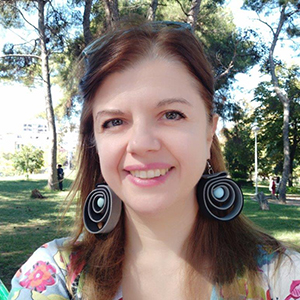
Iro Katsaridou
Greece, 2019, 2020
Iro Katsaridou has been the curator of modern and contemporary art at the Museum of Byzantine Culture, Thessaloniki, Greece, since 2005. She studied art history at Aristotle University of Thessaloniki and Université Paris 1 Panthéon-Sorbonne, and museum studies at City University of New York. Her doctoral dissertation (Aristotle University) focused on contemporary Greek photography. Since 2014 she has been researching art and photography in World Wars I and II; she has curated exhibitions on the subject and edited related catalogues. She has coedited two books on photography during the Nazi Occupation in Greece (1941–44), and one on art and culture during the period of Macedonian Front (1915–18). She has also written articles and book chapters on photography, exhibition display policies, and the relationship between art and politics. Since 2016 she has been an adjunct faculty member at several Greek universities.

Alison Kearney
South Africa, 2018, 2021
Alison Kearney is a Johannesburg-based artist and scholar of South African art who lectures on art education in the School of Education at the University of the Witwatersrand (Wits). She obtained her PhD, with a dissertation titled “Beyond the Readymade: Found Objects in Contemporary South African Art,” from Wits in 2016. She completed her master’s degree in fine art (with distinction) from the same university in 2004. Through her research Kearney interrogates the continuities and ruptures between African and Western art practices by critically exploring the ways in which Western avant-garde art practices and their attendant theories have informed contemporary African art. Kearney’s artworks have been featured in numerous exhibitions in South Africa, Switzerland, and Australia. She has published scholarly work on contemporary South African art and develops educational materials that facilitate particular engagements with art for the Wits Art Museum.

Natalia Keller
Chile, 2018
Natalia Keller is a graduate of Warsaw University (BA, 2010) and Utrecht University (MA, 2013), and a museum professional in a variety of cultural institutions in Europe and South America. Since 2014 she has been a researcher in the Collection Department of the National Museum of Fine Arts in Santiago de Chile, where she studies its foreign works of art and their place within a Latin American context. Her research interests include prints and drawings, gender studies, and women artists. Keller has directed and participated in research and exhibition projects about female devotion in the late Middle Ages, women’s involvement in the academy during the nineteenth century, and contemporary Chilean women artists. She is especially interested in presenting art through the perspectives of gender studies and of visual and material culture, as well as through themes of community engagement and social justice.

Kanwal Khalid
Pakistan, 2014
Kanwal Khalid holds a BFA and an MFA in graphic design, an MPhil in art history, and a PhD in fine arts, all from the Punjab University in Lahore, Pakistan. She specializes in the history of South Asian art and design, with a particular focus on miniature painting in nineteenth-century Lahore. A practicing miniaturist, she is currently director of Punjab Archives, Lahore. Previously she taught at the National College of Arts, Lahore College for Women, and University of the Punjab, following an earlier position as curator of the painting collection at Lahore Museum. Khalid serves on the editorial board of the Trust for History, Art and Architecture of Pakistan, a forum for publications and a research journal. She is also a board member of several organizations, including the Rotary Club Lahore Mozang and the Delaware Lahore Delhi Partnership for Peace, a nonprofit NGO of private citizens in the United States, Pakistan, and India dedicated to the creation of mutual understanding and goodwill.

Nadhra Shahbaz Khan
Pakistan, 2012, 2019
Nadhra Shahbaz Khan is an associate professor of art history at the Lahore University of Management Sciences, Lahore, Pakistan. A specialist in the history of art and architecture of the Punjab from the sixteenth to the early twentieth century, her research covers the visual and material culture of this region during the Mughal, Sikh, and colonial periods. She is the author of Maharaja Ranjit Singh’s Samādhi in Lahore: A Summation of Sikh Architectural and Decorative Practices, a monograph published in the University of Bonn’s SAAC series in 2018. Khan has held research fellowships at SOAS, London (Charles Wallace Fellowship 2010–11), INHA, Paris (2015), Princeton University (Fulbright 2014–15), and Oxford University (Barakat Trust 2014–15). She has been working with the Aga Khan Cultural Service–Pakistan as consultant historian for its Lahore Fort project since 2016.
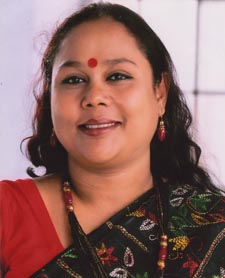
Mahmuda Khnam
Bangladesh, 2014
Mahmuda Khnam is an assistant professor in the Department of Islamic History and Culture, Jagannath University, Dhaka, Bangladesh. She has been teaching and researching Islamic art, especially that of the Indian subcontinent, for more than a decade. Before joining the newly established university in 2012, she taught at Eden College in Dhaka. Having earned her MPhil with a dissertation on Mughal architecture in the Comilla region of Bangladesh, Khnam is currently completing her PhD, researching the development of painting in Bengal during the eighteenth and nineteenth centuries. In addition to a monograph based on her MPhil thesis, Khnam has published a number of articles on Islamic art and the art of Bengal, mostly in her native language, Bangla.
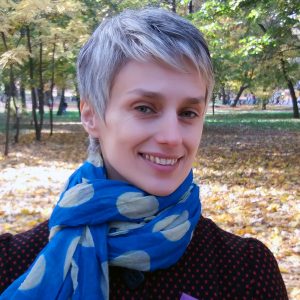
Halyna Kohut
Ukraine, 2019
Halyna Kohut is an associate professor in the Faculty of Culture and Arts at the Ivan Franko National University of Lviv, Ukraine, where she teaches history of art, contemporary art, and history of theatrical costume. Originally educated as a textile artist, she received a PhD from the Lviv National Academy of Arts with a dissertation on seventeenth- and eighteenth-century Ukrainian kilims. She is the recipient of scholarships and grants from the Austrian Agency for International Mobility and Cooperation in Education, Science, and Research, the Canadian Institute of Ukrainian Studies at the University of Alberta, and the Queen Jadwiga Foundation at the Jagiellonian University in Cracow. Kohut studies Ukrainian kilims as an intermediate zone between Oriental and Western design traditions formed on the so-called great cultural frontier between the Christian West and the Islamic East. She is especially interested in the migration of ornamental patterns as well as the articulation of textile’s social and political meanings in the historical context.

Irena Kossowska
Poland, 2012, 2017
Irena Kossowska is a professor of art history at the Nicolaus Copernicus University in Torun, Poland. She has lectured at Warsaw University, School for Humanities, Collegium Civitas, Academy of Fine Arts, and the Institute of Art of the Polish Academy of Sciences in Warsaw. She specializes in nineteenth- and twentieth-century art, art theory, and criticism in Europe and the United States. She is the recipient of numerous awards and fellowships, including from the Bogliasco Foundation (Italy), the Center for Advanced Study in the Visual Arts and the Smithsonian Institution (Washington, DC), Zentralinstitut für Kunstgeschichte (Munich), the National Humanities Center (North Carolina), Institut national d’histoire de l’art (Paris), and the Henry Moore Institute (Leeds, UK). She has written extensively on Polish and European art; her books include Artistic Reconquest: Art in Interwar Poland and Europe (2017), The Search for Cultural Identity in Eastern and Central Europe 1919–2014 (2015), Symbolism and Young Poland (2011), and Reinterpreting the Past: Traditionalist Artistic Trends in Central and Eastern Europe of the 1920s and 1930s (2010).
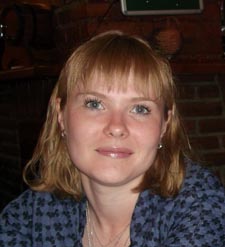
Daria Kostina
Russia, 2014
Daria Kostina is a lecturer in the Department of Art History and Cultural Studies at the Ural Federal University in Yekaterinburg, Russia. Previously, she was also a curator at the B. U. Kashkin Museum, an experimental exhibition space and collection of underground and alternative art, housed within the same department and university. In addition to Yekaterinburg, she has curated exhibitions in Saint Petersburg and New York. Kostina studies Russian émigré art of the 1920s and 1930s, in particular artists who lived in the Czech Republic, and regional Russian underground and alternative art from the 1960 to the 1980s. Her PhD dissertation (in progress) is devoted to the work of Grigory Musatov, a Russian artist who emigrated to Prague in 1920. She is also interested in urban studies and in 2012 organized an interdisciplinary workshop for emerging scholars, “Contemporary Art as a Humanization Instrument for Public Spaces” (Yekaterinburg).

Nazar Kozak
Ukraine, 2015, 2017, 2019
Nazar Kozak is a senior researcher at the Department of Art History in the Ethnology Institute of the National Academy of Sciences of Ukraine. He is also an associate professor at the University of Lviv. Kozak received a PhD from Lviv Academy of Arts in 2000. His research was supported by scholarships and grants from the Fulbright Scholar Program, Getty Scholar Program, the American Council of Learned Societies, and other organizations. His research concerns visual culture, iconography, and art exchanges in the Byzantine and post-Byzantine cultural spheres. He has authored the book Image and Authority: Royal Portraits in the Art of Kyivan Rus’ of the Eleventh Century (Lviv, 2007). He also works on contemporary art, exploring art’s agency in crisis situations. His article on the art interventions during the Ukrainian Maidan revolution was published in the spring 2017 issue of Art Journal; it received an honorable mention as a finalist for that year’s Art Journal Award.

Sandra Križić Roban
Croatia, 2018, 2021
Sandra Križić Roban is a critic, curator, lecturer, PhD supervisor, and writer; a senior research advisor at the Institute of Art History in Zagreb; and the lead investigator on the scholarly project Ekspozicija: Themes and Aspects of Croatian Photography from the Nineteenth Century until Today (2020–24), funded by the Croatian Science Foundation. She received her PhD from the University of Zagreb. Her research topics include contemporary art, history and theory of photography, postwar architecture, and contemporary war memorials in Croatia. As head of the Office for Photography, established in 2013 as a nonprofit association dedicated to contemporary photography, she is responsible for the program of Gallery Spot, publishing, and national and international research projects. Križić Roban has published several books, comprehensive book chapters, scholarly papers, and catalogue essays, and she has hosted a number of retrospective exhibitions, as well as extensive thematic exhibitions, both in Croatia and abroad.
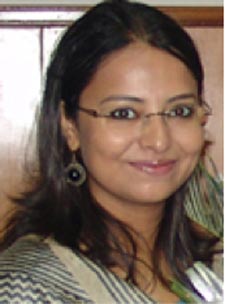
Savita Kumari
India, 2015
Savita Kumari is currently an assistant professor in the Department of History of Art at the National Museum Institute of History of Art, Conservation, and Museology, New Delhi, India. She holds a PhD from the same institute and specializes in medieval and premodern Indian art history. Engaged in research and teaching for the past eight years, Kumari is currently working on an international research project called Cham Sculptures from Vietnam and Their Interface with Indian Art, in collaboration with the Da Nang Museum of Cham Sculpture, Vietnam. She published a book entitled Tombs of Delhi: Sultanate Period (2006) and coauthored the book Heritage of Haider Ali and Tipu Sultan: Art and Architecture (2012). Kumari has been awarded fellowships from the Indian Council of Historical Research, the Charles Wallace India Trust Grants for Research and Visit, and a UK Travel Award from Nehru Trust for Indian Collections at the Victoria and Albert Museum.
Jean-Célestin Ky
Burkina Faso, 2012
Jean-Célestin Ky is a professor of history and art history at Joseph Ki-Zerbo University in Ouagadougou. His research focuses on African arts, in particular those of Burkina Faso and the historical foundations of cultural practices. Ky works mainly with the Sanan, or Samo, people of northwestern Burkina Faso, studying in particular their contemporary art and cultural practices such as traditional wrestling and joking kinship. He is interested in the relationships between masks and politics, health, the roles of women, and revealed religions. Ky also studies contemporary art presented as part of the biennial National Culture Week of Burkina Faso, held in Bobo-Dioulasso.

Peju Layiwola
Nigeria, 2013, 2018, 2021
Peju Layiwola is an artist and a professor of art history, Department of Creative Arts, University of Lagos, Nigeria. Through her writing and multimedia works, Layiwola has addressed the tragic impact of the British Expedition to Benin, Nigeria, in 1897. Her focus on memory, Benin art and culture, and female participation in the visual arts in Nigeria has led to several articles in edited volumes such as Benin Kings and Rituals: Court Arts from Nigeria (2007) and Writing African Women: Gender, Popular Culture and Literature in West Africa (1997), and in N.Paradoxa, an international feminist journal (2013). Layiwola’s art has featured in several exhibitions within and outside Nigeria, including Benin1897.com: Art and the Restitution Question (University of Lagos, 2010), Whose Centenary? (Benin City, 2014), and the traveling exhibition Boundary Object organized by Artefakte, Berlin (Dresden and Madrid, 2015–16). She is currently head of the Department of Creative Arts, University of Lagos.

Mariana Levytska
Ukraine, 2020, 2021
Mariana Levytska is a research associate in the Department of Art Studies of the Ethnology Institute at the National Academy of Sciences of Ukraine in Lviv. She received a PhD in the history of art from the Lviv National Academy of Arts in 2003. She published a monograph based on her thesis about Ukrainian portrait painting as an artistic and memorial phenomenon of the long nineteenth century. In addition, she has worked as a senior lecturer from 2005 to 2014 and an associate professor in 2015 at the Department of Architectural Environment Design in the Faculty of Architecture of the Lviv National Agricultural University. Levytska’s current area of research is Ukrainian religious art of the eighteenth century (late Baroque–Rococo period), focusing on the concept of cultural transfer according to “peripatetic works of art (such as engravings and albums)” as well as peripatetic artists. She is also interested in issues of the Ukrainian historiography of the art of the twentieth century.
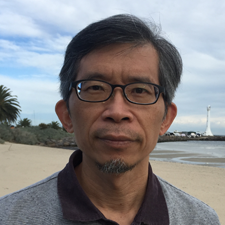
Hsin-tien Liao
Taiwan, 2018
Hsin-tien Liao holds PhDs in art history (University of Central England in Birmingham, UK) and sociology (National Taiwan University, Taipei). He is the dean of the College of Humanities at the National Taiwan University of Arts and also teaches at the school’s Graduate School of Art Management and Culture Policy. From 2010 to 2013 he was a senior lecturer at Australian National University, where he is now an honorary professor. Liao’s research focuses on calligraphy, Taiwanese art, the sociology of art, and postcolonial visual art. Recent publications include The Tension of Art: Taiwanese Fine Art and the Politics of Culture (2010), Extending Knowledge through Investigating Art (2013), and A New Thinking on Taiwanese Art: Framework, Criticism, and Aesthetics (2017). He has written biographies about two modern Taiwanese printmakers: Liao Shiou-ping (2016) and Li Xi-chi (2017). In 2013 he published a Chinese translation of Kenneth Clark’s Landscape into Art. In 2016 he established the Taiwanese Art History Association and became its first chair.
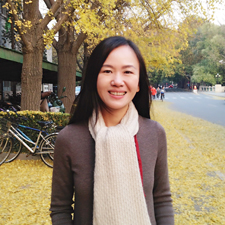
Chen Liu
China, 2018, 2019
Chen Liu teaches art history and architecture at Tsinghua University in Beijing, China, where she received a bachelor’s degree in architecture with honors. After receiving a master’s in architecture and urban planning from the University of Maryland in 2000, she practiced as an architect in Washington, DC, until 2005. In 2011 she received a PhD in art history from Princeton University, specializing in Renaissance and Baroque art and architecture. In 2012, funded by an Andrew W. Mellon Fellowship, she helped create and direct the first Villa I Tatti summer research seminar designed specifically for Chinese scholars, “The Unity of the Arts in Renaissance Italy.” publishes widely on early modern art and architecture, as well as on the response of Chinese scholars to the Italian Renaissance. For the academic year 2018–19 Liu was a Harvard-Yenching Institute Visiting Scholar at Harvard University and in 2019-20 she was a Scholar-in-Residence at the Getty Research Institute.

Daniela Lucena
Argentina, 2020, 2021
Daniela Lucena holds a PhD in social sciences from the University of Buenos Aires (UBA) and specializes in the sociology of art and culture. A researcher at the National Scientific and Technical Research Council (CONICET) in Buenos Aires, she teaches sociology of art courses at UBA, where she is also head of a research team. Since 2003 she has studied aesthetic projects in which art, culture, and politics are intertwined. Her books include Contaminación artística: Arte concreto, comunismo y peronismo en los años 40 (Artistic contamination: Concrete avant-garde, communism, and Peronism in the 1940s, Biblios, 2015) and Modo mata moda: Arte, cuerpo y (micro)política en los 80 (Form kills fashion: Art, body and [micro]politics in the 1980s), coauthored with Gisela Laboureau (EDULP, 2016). In addition to her work as researcher, she has collaborated since 2007 with PH15, a foundation that organizes photography workshops for children of vulnerable populations, assessing programs and community work linked to art.
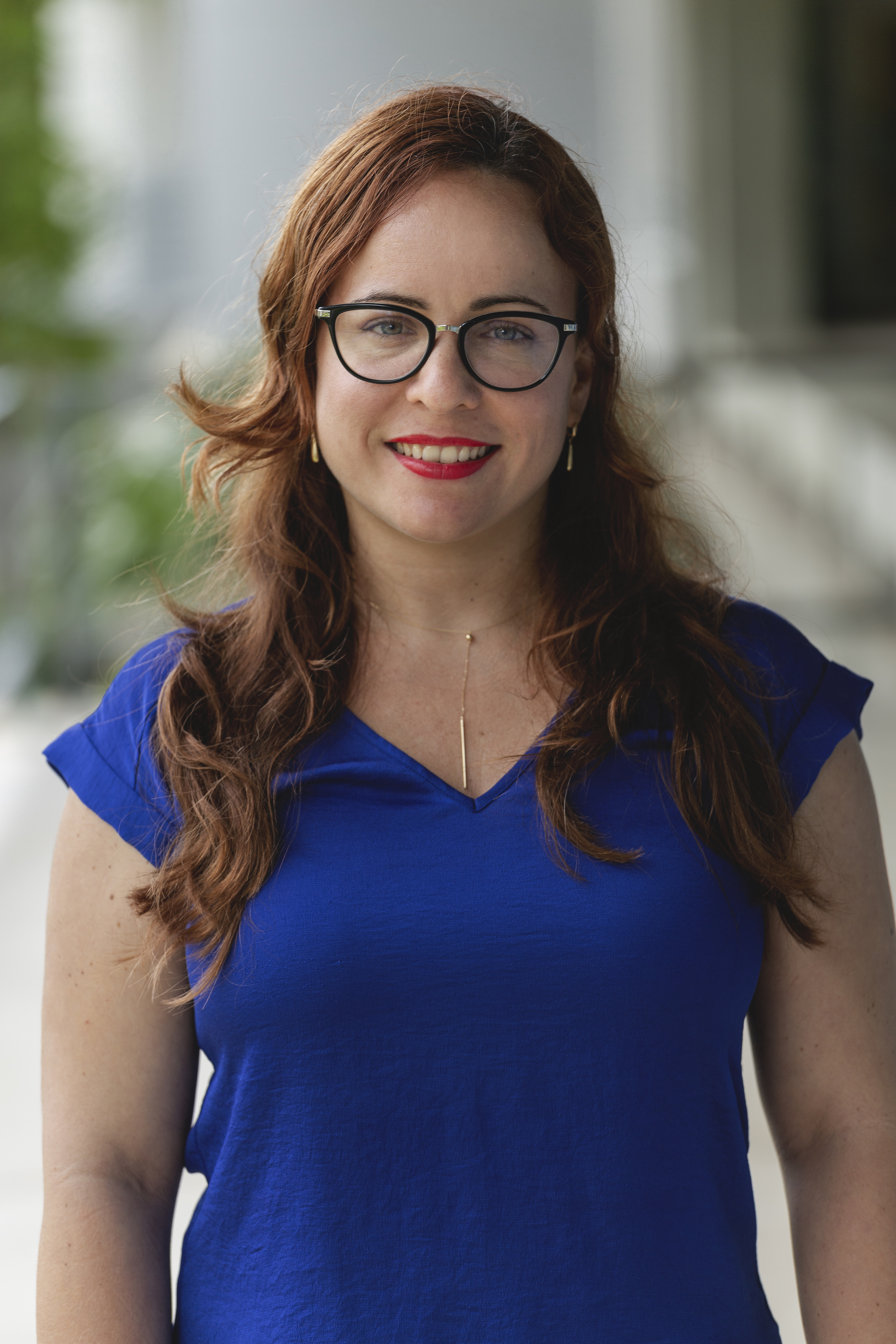
Lilianne Lugo Herrera
Cuba, 2014
Lilianne Lugo Herrera holds a PhD in literary, cultural, and linguistic studies, and has served as a graduate teaching assistant in the Modern Languages and Literatures Department, University of Miami. She recently defended her dissertation, “Mediated Archipelagoes: Theater, Women, and Media.” In support of her dissertation, Lugo Herrera received the Goizueta Dissertation Fellowship from the Cuban Heritage Collection, and the Center for the Humanities Dissertation Fellowship, both in 2019. Recent awards also include an MLA Travel Grant (2020), the ASTR Thomas Marshall Award (2018), participation in the NEH Summer Institute on Digital Technologies in Theatre and Performance Studies (2018), and the Feministas Unidas Graduate Essay Award (2017). Her articles have appeared in the edited volume Reading Cuba (Aduana Vieja, 2018), and in the journals Valenciana, Gestos, Anuario de Estudios Cervantinos, Conjunto, and Tablas.
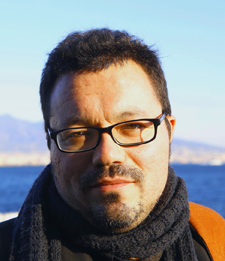
Lev Maciel
Russia, 2016
Lev Maciel graduated from the Medieval Studies Department at Lomonosov Moscow State University in Russia in 1998, with an MA thesis on fifteenth-century Spanish history. His dissertation on eighteenth-century Siberian architecture earned him a PhD in 2004 from the State Institute for Art History in Moscow. Currently Maciel is an associate professor in the Faculty of Humanities of the National Research University Higher School of Economics in Moscow, where he supervises the recently created program in art history. He is also a part-time research associate professor at the Institute for Theory and History of Architecture and Town Planning in Moscow. Maciel’s research interests include a wide range of subjects within the history of architecture, including the late Renaissance and Baroque (Russia, southern Italy, Brittany, Spain, and Latin America), late antiquity and Byzantium, the Islamic world, Mongolia and Tibet, and nonmodernist movements in the twentieth century.

Ali Mahfouz
Egypt, 2020
Ali Mahfouz is the director of the Mansoura Storage Museum, part of the Ministry of Egyptian Antiquities. He received a BA in 2010 and an MA in Egyptology in 2017, both from Mansoura University. He is currently working on his PhD. Mahfouz began working as an inspector of antiquities at the Ministry of Antiquities in 2012. In August 2015 he was appointed the supervisor of the Mansoura Storage Museum, and in October 2018 he became its director. With colleagues, Mahfouz founded Save Mansoura, a volunteer organization dedicated to raising public awareness about the value of cultural heritage and the restoration of historic sites. He is also the cofounder of the Documentation of Architectural and Urban Heritage of Mansoura City Project, which aims to document, digitize, and archive that city’s cultural history. His greatest concern is the fate of archaeological sites damaged or destroyed because of political conflicts and the need to preserve his country’s cultural heritage in the wake of that destruction.

Priya Maholay-Jaradi
Singapore, 2020, 2021
Priya Maholay-Jaradi is the founding convenor of a new art history academic program, a collaboration between the National University of Singapore (NUS) and the National Gallery Singapore. She earned an MA in art history from the School of Oriental and African Studies, London (2001), a PhD from NUS (2012), and a postdoctoral fellowship at the International Institute for Asian Studies, Leiden (2013). Jaradi served as an assistant curator (South Asia) at the Asian Civilizations Museum, Singapore (2005-2007). Her curatorial projects include Portrait of a Community (National Gallery of Modern Art, Mumbai, 2002), Beauty in Asia (Asian Civilizations Museum, Singapore, 2007) and Tautology of Memory (NUS Museum, Singapore, 2012). Jaradi’s monograph Fashioning a National Art: Baroda’s Royal Collection and Institutions (1875–1924) (Oxford University Press, 2016), mobilizes provincial archives to reveal links between princely modernities and nationalisms in South Asia. She is the volume editor of Baroda: A Cosmopolitan Provenance in Transition (Marg Foundation, 2015). Her current research examines India-Singapore museological imaginations within the context of Cold War diplomacy, the Non-Aligned Movement, and decolonization.
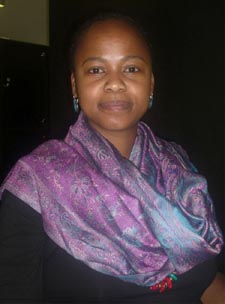
Nomusa Makhubu
South Africa, 2015, 2018
Nomusa Makhubu is an associate professor in art history and deputy dean of transformation in humanities at the University of Cape Town. She holds a PhD in art history and visual culture from Rhodes University. Makhubu was the recipient of the ABSA L’Atelier Gerard Sekoto Award (2006) and the Prix du Studio national des arts contemporains, Le Fresnoy (2014). In 2016 she received the American Council of Learned Societies African Humanities Program Fellowship award and was an African Studies Association Presidential Fellow in 2016. In 2017 she was a UCT-Harvard Mandela fellow at the Hutchins Center for African and African American Research, Harvard University. Recognizing the need for mentorship, collaborative practice, and socially responsive arts, she founded the Creative Knowledge Resources project. She coedited a Third Text special issue, “The Art of Change” (2013), and cocurated with Nkule Mabaso the international exhibition Fantastic in 2015, and The Stronger We Become in 2019 at the 58th Venice Biennale in Italy.
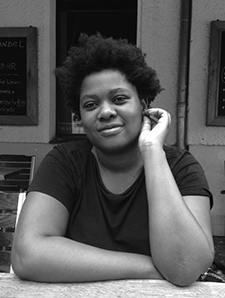
Portia Malatjie
South Africa, 2014, 2017
Portia Malatjie is a senior lecturer in visual cultures at the University of Cape Town’s Michaelis School of Fine Art. She is an adjunct curator of Africa and African Diaspora at Tate Modern (London) and an adjunct curator at Norval Foundation, Cape Town. She holds a PhD in visual cultures from Goldsmiths University of London. Her research looks at African conceptions of Blackness and Black feminism though the intersection of African sonic registers, technology, and African spiritual praxes. Malatjie has lectured at SOAS University, Goldsmiths University, Rhodes University, and Stellenbosch University. She was curator at Tiwani Contemporary, London (2017–18), head curator of Brundyn+ Gallery, Cape Town (2013–15), and director of the AVA Gallery, Cape Town (2015). Her curated exhibitions include Batlhaping Ba Re! Mmakgabo Mapula Helen Sebidi (2018) and Trade Winds: Yinka Shonibare CBE (2019). Malatjie was named one of Apollo Magazine’s “40 under 40 in Africa” for 2020.

Ana Mannarino
Brazil, 2015, 2017, 2021
Ana Mannarino is an art historian and a professor of art history in the School of Fine Arts and the Visual Arts Postgraduate Program at the Federal University of Rio de Janeiro, where she received her PhD in history of arts and visual arts. She participated in a yearlong collaborative study program at Université Sorbonne Nouvelle - Paris 3. Her research focuses on the relationship between text and image in Brazilian contemporary art and also considers the connections between art and poetry in Brazil, Concrete and Neoconcrete art, and the production of artists’ books.
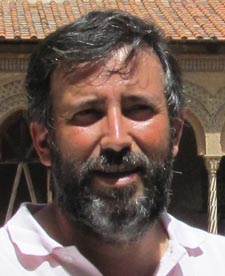
Fernando Luis Martínez Nespral
Argentina, 2014
Fernando Luis Martínez Nespral, an architect, graduated from the Universidad de Buenos Aires; he holds a PhD in history from Universidad Torcuato Di Tella. He is a professor of architectural history and a researcher at the American Art and Aesthetic Studies Institute, both at the School of Architecture, Design, and Urbanism, Universidad de Buenos Aires, Argentina. Currently, he is a member of several international associations, such as CAA, the Society of Architectural Historians, the Global Architectural History Teaching Collaborative, and Asociación Iberoamericana de Historia Urbana. Martínez Nespral is focused on Islamic architecture and its connections with the Iberian American world from the Middle Ages to the present.
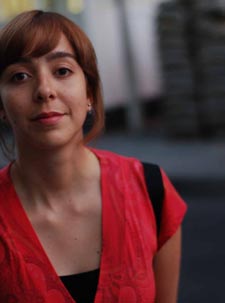
Susana S. Martins
Portugal, 2014
Susana S. Martins is a senior researcher and invited professor at the Institute of Art History, FCSH, Universidade NOVA de Lisboa, where she currently coordinates the Museum Studies research group. With a doctorate in photography and cultural studies from the Katholieke Universiteit Leuven, Belgium, she has been mainly working on the intersection of photography, exhibitions, and print cultures. Her research covers topics such as photographic books, national identities, city portraits, propaganda, and world expositions. The author of several publications on these themes, she has worked with a variety of museums and curatorial projects. She is a member of the Lieven Gevaert Research Centre for Photography, Art and Visual Culture. Martins also teaches in the fields of photography, contemporary art history, and nineteenth-century visual culture.
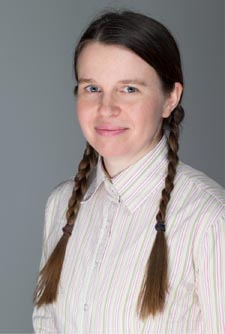
Pavlína Morganová
Czech Republic, 2012
Pavlína Morganová, a PhD art historian and a curator, is vice-rector for art, research, and development at the Academy of Fine Arts in Prague, where she also directs the Research Center. Her recent research concentrates on the medium of the exhibition; she is coauthor of Exhibition as a Medium: Czech Art 1957−1999, (VVP AVU, 2020). She is the author of A Walk through Prague: Actions, Performances, Happenings 1949–1989, (VVP AVU, 2017), and Czech Action Art: Happenings, Actions, Events, Land Art, Body Art and Performance Art behind the Iron Curtain (University of Chicago Press, 2014; Karolinum Press, 2015). She lectures on Czech art of the twentieth century and has coedited anthologies of manifestos and documents of Czech art 1939–89, and Czech art 1980–2010. She has published widely in journals and exhibition catalogues. Among her recent exhibitions are Sometimes in a Skirt: Art of the 1990s (Brno and Prague, 2014), and The Beginning of the Century 2000–2010, (Pilsen, 2012; Ostrava, 2013).
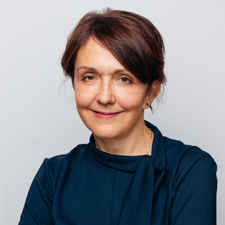
Natalia Moussienko
Ukraine, 2018
Natalia Moussienko is a leading research fellow at the Modern Art Research Institute of the National Academy of Arts of Ukraine (Kyiv). She is the author of numerous books and articles on art history, cultural diplomacy, cinema, and urbanism, including Art of Maidan (2016), Kyiv Art Space (2013), and Arts and Politics (2002). In 2016 the National Academy of Arts of Ukraine awarded Moussienko a gold medal for her achievements in cultural diplomacy. She was also awarded a Fulbright scholarship to conduct research at the Kennan Institute, Wilson Center, in Washington, DC (2011–12), and a Thesaurus Polonia Fellowship to study at the International Cultural Center in Krakow (2017). Moussienko is an initiator and curator of Art of Maidan, a continuing project begun in 2014 to document the explosion of artistic creativity during the Revolution of Dignity in 2013–14. Central to the project is a book and exhibition that has already been presented in sixteen locations in Ukraine, the United States, and Europe.

Emmanuel Moutafov
Bulgaria, 2016
Emmanuel Moutafov is a Byzantinist, art historian, and epigrapher who holds a PhD in world history of the fifteenth to nineteenth centuries from the Institute for Balkan Studies at the Bulgarian Academy of Sciences in Sofia. He has been a visiting research fellow at the Program in Hellenic Studies at Princeton University, a Mellon Foundation Fellow at the Institute for Advanced Studies in Berlin, a Mellon Foundation Fellow at the W. F. Albright Institute of Archaeological Research in Jerusalem, and a Getty Foundation research fellow in the summer research group Visions of Byzantium in Istanbul, Turkey. In 2013 he became a supervisor of research at the board of directors of the Institute for Art Studies at the Bulgarian Academy of Sciences and the following year was appointed director of the same institute.

Parul Dave Mukherji
India, 2013, 2017, 2021
Parul Dave Mukherji is a professor at the School of Arts and Aesthetics, Jawaharlal Nehru University, New Delhi, India. She holds a PhD from Oxford University. Recent publications include articles in Democratic Culture: Historical and Philosophical Essays (Routledge, 2011), Art History in the Wake of the Global Turn (Sterling and Francine Clark Art Institute, 2014), and The Art Bulletin (June 2014). Dave Mukherji coedited InFlux: Contemporary Art in Asia (Sage, 2013) and the Association of Social Anthropologists (ASA) volume Arts and Aesthetics in a Globalizing World (Bloomsbury Academic, 2014). She is the recipient of a number of awards and fellowships, including the British Academy award (2011); a Baden-Württemberg Fellowship, South Asia Institute, Heidelberg University, Germany (2013); a Clark Art Institute Fellowship, Williamstown, Massachusetts (2014); and a Kunsthistorische Institut Fellowship, Florence (2016). She participated in the CAA-Getty International Program in 2013.

Cristian Nae
Romania, 2012, 2017, 2021
Cristian Nae is an associate professor at George Enescu National University of the Arts in Iasi, Romania, where he teaches critical theory, exhibition studies, art historical methodologies, and contemporary art history. His research focuses on exhibition studies and contemporary art history and theory in Central and Eastern Europe after the 1960s. He has received research grants and fellowships from the Erste Foundation, Vienna; the Getty Foundation, Los Angeles; the New Europe College Institute for Advanced Studies, Bucharest; and CNCS-UEFISCDI (Romanian National Research Council). An active writer of art criticism, Nae is currently the vice president of the Romanian section of the International Association of Art Critics (AICA). His studies have appeared in journals and books published by Routledge, Wiley-Blackwell, de Gruyter, Hatje Cantz, and Peter Lang Verlag, among others.
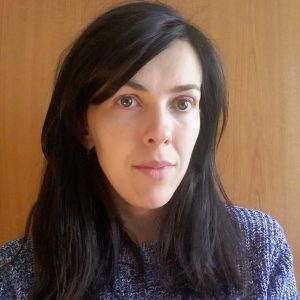
Oana Maria Nicuță Nae
Romania, 2019
Oana Maria Nicuță Nae is an assistant professor in the Department of Art History and Theory, Faculty of Visual Arts and Design, George Enescu National University of Arts, Iasi, Romania. She received a PhD in art history from the same university, where she currently teaches courses on the history of modern European art, the history of design, and art and society in modern Europe. She recently published “The Materialization of Light in the Art of the (Neo-) Avant-Gardes” in Objects and Their Traces: Historical Gazes, Anthropological Narratives, coordinated by Cristina Bogdan and Silvia Marin Barutcieff (Bucharest University Press, 2018). Nicuță Nae’s current research focuses on the representation of women in Romanian modern art. She also studies multiple modernities, taking into account the particular position of Romanian art narratives in regional and global attempts to construct encompassing ones. Recently she has started parallel research on the notion of influence in nineteenth-century Romanian and European art.
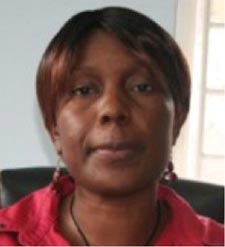
Venny Mary Nakazibwe
Uganda, 2013
Venny Nakazibwe is a textile designer and art historian, currently a senior lecturer and dean of the Margaret Trowell School of Industrial and Fine Arts, Makerere University, Uganda. She holds an MA in textile design and a PhD in art history. She has conducted extensive research on the history of African textiles, focusing on indigenous fabric design and decorative techniques, as well as the contemporary use of these materials in art and design practice. Nakazibwe is the winner of the 2007 Roy Sieber Award for her outstanding PhD dissertation on bark cloth of the Baganda of southern Uganda. She has conducted lectures, workshops, and consulting work locally and internationally on the historical and contemporary use of bark cloth in art and design practice and on design education for creative enterprises.
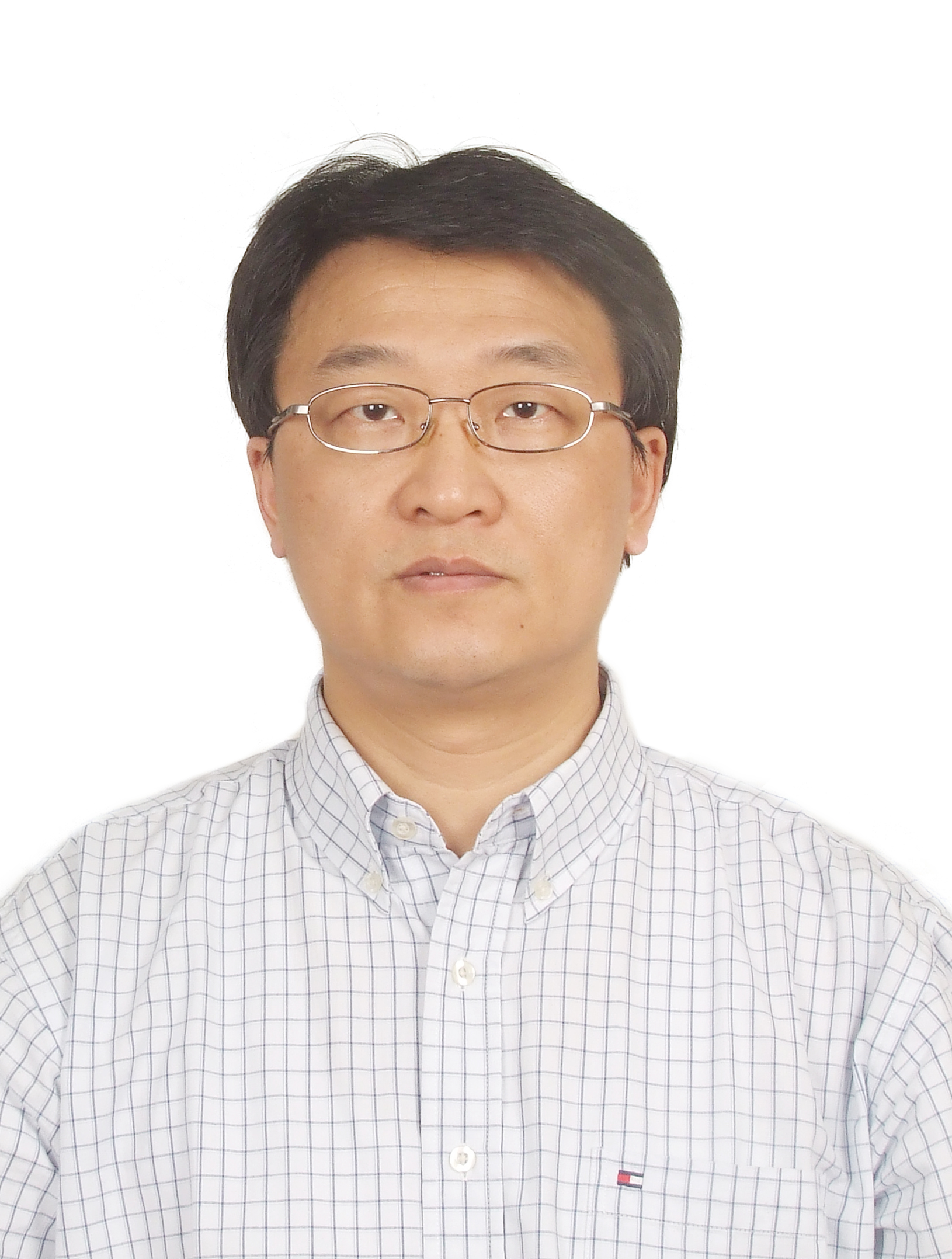
Ding Ning
China, 2013, 2017
Ding Ning is a professor of art history and theory at Peking University, China. He graduated from Beijing Normal University with a PhD in art theory in 1988. In 1993 he won a fellowship from the British Council to spend a year at the University of Essex, United Kingdom, conducting research in the Department of Art History and Theory. Ning’s Chinese publications include Dimensions of Reception (1990), Psychology of Visual Art (1994), Dimensions of Duration: Toward a Philosophy of Art History (1997), Depth of Art (1999), Fifteen Lectures on Western Art History (2003), Spectrum of Images: Toward a Cultural Dimension of Visual Art (2005), Understand Art (2013), and Western Art History (2015). He has also translated extensively, including works by Rudolf Arnheim, Norman Bryson, and David Carrier, among others.
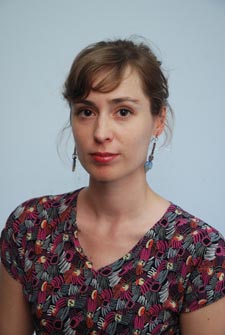
Magdalena Anna Nowak
Poland, 2014
Magdalena Anna Nowak is an assistant curator in the Department of Modern and Contemporary Art at the National Museum in Warsaw. She received an MA from the Institute of Art History at the University of Warsaw in 2010, having spent the previous year at the Ecole des hautes études en sciences sociales in Paris in the department of Théories et pratiques du langage et des arts. Her research then concentrated mainly on contemporary video art. In her current position she is in charge of the film and new-media collections at the museum and also curates temporary exhibitions. Nowak is currently writing a PhD dissertation on repetition and reenactment of old-master paintings in video art. Her research concerns the interactions between old and contemporary art, the empathy theory, Aby Warburg’s legacy, the representation of emotions in art, and viewers’ reactions toward depicted passions and neuro art history. She is also interested in Polish art from the 1970s.
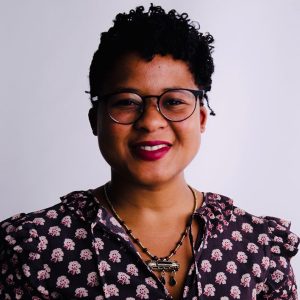
Zamansele Nsele
South Africa, 2019
Zamansele Nsele is an art historian and teaches visual and cultural studies in the English Department at the University of Johannesburg. She obtained her PhD in art history at Rhodes University, where she previously taught art history and visual culture. Nsele’s research focuses on postapartheid nostalgia in contemporary South African art. In June 2018, she was included in the Mail & Guardian’s prestigious list of “Top 200 Young South Africans.” Her writing has been published by Routledge and in the Journal of Asian and African Studies, English in Africa, Elle Decoration: Africa Edition, the Mail & Guardian, The Journalist, and Sandwich Magazine.
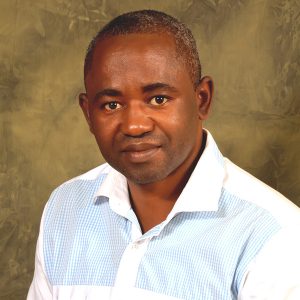
Chukwuemeka Nwigwe
Nigeria, 2019
Chukwuemeka Nwigwe is a Nigerian artist and art historian with special interest in textile and fashion. He earned a PhD in art history in 2016 and an MFA in textile design in 2008 from the Department of Fine and Applied Arts, University of Nigeria, Nsukka. His doctoral dissertation is on changes in clothing practices of the Igbo of southeastern Nigeria, and his postdoctoral project, funded by the African Humanities Program (AHP) of the American Council of Learned Societies, is on female cross-dressing in Southeastern Nigeria. The latter project, concluded in 2019, spurred his recent research in gender and dress in postcolonial Africa. Nwigwe took part in a two-month AHP remote mentoring program in 2020 through AHP’s residency center at Rhodes University, South Africa. He was an AHP fellow in residence at the University of Dar es Salaam in 2019. He is a member of both the Art Council of African Studies Association (ACASA) and the African Studies Association (ASA).
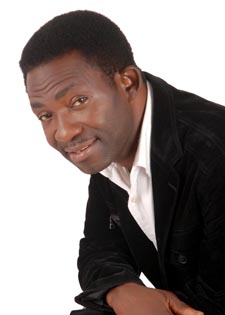
Freeborn Odiboh
Nigeria, 2014
Freeborn Odiboh is a professor of art and art history in the Department of Fine and Applied Arts, University of Benin, Edo State, Nigeria. He teaches art history, and supervises written and studio projects, while creating and exhibiting his own artworks. He obtained a BFA in sculpture from the University of Benin, Benin City; an MA in African studies (visual arts history) from the Institute of African Studies, University of Ibadan; a postgraduate diploma in education (PGDE) from the University of Benin; and a PhD in art history from the University of Nigeria, Nsukka. Odiboh’s international academic awards and postdoctoral and senior visiting fellowships include a 2019 Ailsa Mellon Bruce Senior Visiting Fellowship at the Center for Advanced Study in the Visual Arts, National Gallery of Art, Washington, DC. In 2018 the African Humanities Project of the American Council of Learned Societies awarded him a fellowship as scholar in residence at Makerere University, Kampala, Uganda.
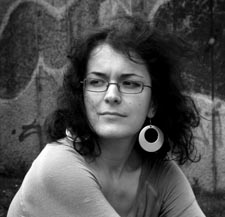
Adriana Oprea
Romania, 2014
Adriana Oprea is a Romanian critic and art historian. She received her MA in art history at the National University of Arts in Bucharest with a study of feminism in recent Romanian art. She is currently pursuing a PhD, focusing on the discourse of art criticism and the status of the art critic during and after the Communist regime in Romania. Since 2006, Oprea has been a researcher and archivist at the National Museum of Contemporary Art in Bucharest, where she organizes data on the activity of Romanian artists. Oprea frequently collaborates with art spaces and writes essays for exhibition catalogues and reviews for Romanian magazines. She is associate editor of ARTA magazine, the main Romanian art publication during the Communist era and one of the few concerned with the present state of Romanian art. She sometimes curates exhibitions and on rare occasions presents work as an artist. Oprea lives and works in Bucharest.

Márton Orosz
Hungary, 2015, 2021
Márton Orosz is the curator of the collection of photography and media arts at the Museum of Fine Arts–Hungarian National Gallery in Budapest, where he also directs the Vasarely Museum affiliated with the museum. There, over the last decade he has curated a handful of exhibitions. He earned his PhD in art history at the Eötvös Loránd University in Budapest. During his studies he was Terra Fellow at the Smithsonian American Art Museum in Washington, DC, a György Kepes Fellow for Advanced Studies and Transdisciplinary Research at the Massachusetts Institute of Technology, a Forum Transregionale Studien/Institute for Cultural Inquiry Post-Doctoral Fellow in Berlin, a Centre for Contemporary Art Curator-in-Residence in Singapore, and a Getty Research Institute grantee in Los Angeles. He has lectured widely across Europe, the United States, and Asia. His publications range in fields from photography, avant-garde collectorship, and abstract geometric and kinetic art to motion pictures and animated film.

Ceren Özpınar
Turkey/United Kingdom, 2016, 2017
Ceren Özpınar is currently a British Academy Newton International Fellow in the Department of Art History at the University of Sussex, England. She received a PhD in the history of art from Istanbul Technical University in 2015. Her thesis, Art Historiography in Turkey, published by the History Foundation Yurt Publishers in 2016, presents a critical analysis of histories of modern and contemporary Turkish art from 1970 to 2010. Her postdoctoral research builds on her PhD and provides both a critical approach and a new narrative for feminist art and its histories in Turkey. Özpınar was a research fellow at the University of Leeds during the 2013–14 academic year. Her teaching interests have focused on questions of feminism, nationalism, and discourse in art, as well as histories of modern and contemporary art in the Middle East and North Africa.

Daria Panaiotti
Russia, 2020, 2021
Daria Panaiotti is a photography curator and research associate in the Contemporary Art Department of the State Hermitage Museum, St. Petersburg, Russia. She graduated with honors from the European University in St. Petersburg, where she is currently completing her PhD with a dissertation on the history of Soviet documentary photography in the Brezhnev era. She is also a member of the program committee of the “After Post-Photography” international conference, the only annual conference on photographic theory and history in Russia. Previously she was involved in the project In Support of Photography in Russia, funded by the IRIS Foundation, Moscow, where she was a member of the curatorial team that organized exhibitions of Russian photography for FotoFest 2012—an international photography festival held every two years in Houston, Texas—and where she also participated in an international portfolio review for Russian photographers at the Garage Center for Contemporary Culture in Moscow in 2011.
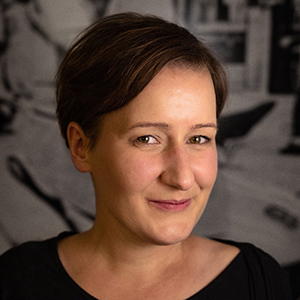
Aleksandra Paradowska
Poland, 2020
Aleksandra Paradowska is a lecturer and researcher in the Department of Art History and Philosophy, Faculty of Art Education and Curatorial Studies, at the University of Fine Arts in Poznań, Poland. After receiving a PhD from the Adam Mickiewicz University in Poznań in 2013, she was a postdoctoral fellow at the University of Wrocław 2014–17. Her research focuses on architectural history of the nineteenth and twentieth centuries, especially the relationship between architecture and politics. For the past five years she has studied Nazi architecture in Polish territories during the Second World War in relation to different perspectives of the humanities, that is, interdisciplinary views of postcolonial and heritage studies. Paradowska has published widely on Polish interwar architecture and received several scholarships: from DAAD (Deutscher Akademischer Austauschdienst) in 2010, START by the Foundation for Polish Science in 2014, and a scholarship for leading young researchers in Poland by the Ministry of Science and Higher Education in 2017–19.
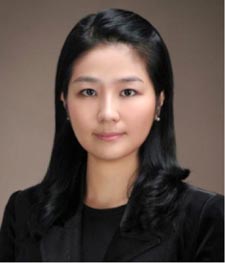
Mheesung Park
South Korea, 2013
Mheesung Park is an art critic and a lecturer at Pusan National University in Korea. She received her PhD in art criticism from Hongik University in Seoul. She obtained an MA in art theory from Seoul National University in 2005 with a thesis about Gutai art, and an MA in art history from University College London in 2008. She has published several books aimed at drawing public interest to art history and art. Her scholarly interests focus on the human body expressed in different contexts and figurative or abstract representation of embodied subjectivity in the field of vision.

Valeria Paz Moscoso
Bolivia, 2020, 2021
Valeria Paz Moscoso specializes in modern and contemporary Bolivian art history. She is the academic coordinator and advisor in the Department of Culture at the Universidad Católica Boliviana (La Paz), where she is also a temporary lecturer and editor of the journal Ciencia y Cultura (Science and culture). Her PhD dissertation examined the concept of repression and emancipation in the work of the Bolivian artist Roberto Valcárcel. Currently, she is researching the disruption of the narrative of Indigenism in contemporary art. Additional research interests include gender, humor, critical theory, postcolonial studies, and arts-based research. She has curated exhibitions in Bolivia and the United Kingdom, and published in journals such as ESCALA Research Papers, Ciencia y Cultura, Bisagra (Hinge), Terremoto (Earthquake), and in the books Corrosión y Anomalía: Escenas del arte contemporáneo boliviano (Corrosion and anomaly: Scenes from contemporary Bolivian art, 2019) and Bolivia: Los caminos de la escultura (Bolivia: The paths of sculpture, 2009), a publication selected for the Bicentennial Library of Bolivia.

Trinidad Pérez
Ecuador, 2013
Trinidad Pérez is a researcher and a professor in the History Department of Universidad Andina Simón Bolívar in Quito, where she is the coordinator of the master’s program Museología y Patrimonio Histórico. She holds a doctoral degree in Latin American cultural studies from the same university, a BA in art history from the University of Maryland, College Park, and an MA in Latin American art from the University of Texas at Austin. Her research interests have centered on the emergence of Ecuadorian modern art. Her special interests have been in the development of a modern system of the arts, pictorial Indigenism, and avant-garde movements in Ecuador. She is linked to the group Religion and Politics in the Nineteenth Century of the Iberconceptos Project and belongs to the Ecuadorian research group that is starting to work with the Archival City Project.

Judy Peter
South Africa, 2012, 2021
Judy Peter, a professor, an art historian, and a curator, is the director of strategic initiatives and partnerships at the Cape Peninsula University of Technology in Cape Town, South Africa. She has published in the areas of gender studies, postcolonial studies, and cultural studies in national and international journals and has presented academic papers both nationally and internationally. She has also curated student jewelry exhibitions in South Africa, London, and New York. Between 2012 and 2021, Peter, along with colleagues (and CAA-Getty alumni) from South Africa and Romania, conceptualized the collaborative research project Between Democracies 1989–2014: Remembering, Narrating and Reimagining the Past in Eastern and Central Europe and Southern Africa (EESA). She was a member of the 2020 conference committee of the Association of International Education Administrators and of the 2019–20 Diversity Abroad Race and Ethnicity Task Force. She has chaired and participated in numerous panels at the meetings of the Asia Pacific Association of International Educators, the Diversity Conference, and the African Studies Association.

Isabel Plante
Argentina, 2013
Isabel Plante holds a PhD in art history from the Universidad de Buenos Aires. She is a researcher of the National Scientific and Technical Research Council (CONICET) at the National University of San Martín, Argentina. Her graduate studies at the Institut national d’histoire de l’art, Paris, were supported by grants from CONICET and the J. Paul Getty Foundation. Her doctoral thesis was published in Argentina in 2013 as Argentines of Paris: Art and Cultural Travels during the Sixties. She was a visiting professor at the École d’hautes études en sciences sociales, Paris, and a visiting researcher at the Universidade do Estado do Rio de Janeiro and the Université de Grenoble Alpes. Her research continues to focus on international art exchanges, cultural identification, and geographical migrations of artists and visual productions between South America, Europe, and the United States in the 1960s and 1970s. Her current project for CONICET is “International Circulation of Cuban Posters and Chilean Arpilleras: Emblematic Latin American Visual Artifacts during the 1960s and 1970s.”

Ohioma Ifounu Pogoson
Nigeria, 2013
Ohioma Ifounu Pogoson is a senior research fellow at the Institute of African Studies, University of Ibadan, Nigeria, the same university from which he received a PhD in visual arts in 1990. He has studied the social history of Benin arts in Germany and worked with US universities on African-studies-based curricula. In 2006 he won a MacArthur Foundation grant to make a comparative study of anglophone and francophone museums across West Africa and Britain. In 2012–13 he was a visiting fellow at the University of Cambridge/Africa Collaborative Research Program on Art and Museums in Africa. Pogoson curates exhibitions and writes extensively about visual arts of Southern Nigeria, particularly Yoruba and Edo arts. His more recent publications include three edited books, about Dotun Okubanjo, Moyo Ogundipe, and Lamidi Fakeye. He is the consulting curator of Africa’s largest private art collection, Omooba Yemisi Adedoyin Shyllon Art Foundation in Lagos, Nigeria, and honorary curator of the Museum of the Institute of African Studies.
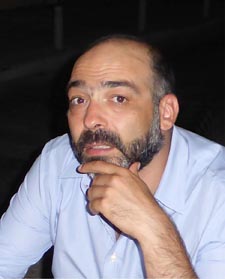
Daniel Premerl
Croatia, 2012
Daniel Premerl is research associate at the Institute of Art History, Zagreb, Croatia. He researches early modern Italian art commissioned by Croatian patrons. He obtained his PhD in 2009 from the University of Zagreb (thesis title: ”Seventeenth-Century Wooden Altarpieces in Dalmatia”). His foci include seventeenth- and eighteenth-century church furnishing (altarpieces, reliquaries), as well as early modern Croatian/Illyrian political iconography. He is the author of Bolonjske slike hrvatske povijesti: Politička ikonografija zidnih slika u Ilirsko-ugarskom kolegiju u Bolonji (Images of Croatian history in Bologna: Political iconography of wall paintings in the Illyrian-Hungarian College in Bologna, Zagreb, 2014) and the coauthor of Katedrala Gospe Velike u Dubrovniku (The Cathedral of Virgin Mary in Dubrovnik, Zagreb–Dubrovnik, 2014). Research scholarships include University of Oxford (FCO/OSI Chevening Scholarship), Università Ca’ Foscari in Venice (Italian government scholarship), and the Harvard University mobile seminar From Riverbed to Seashore led by Alina Payne (Getty Foundation Connecting Art Histories Initiative).
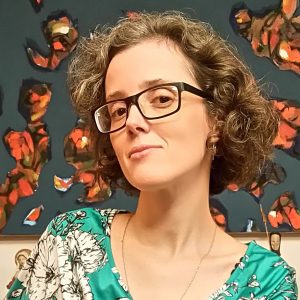
Tamara Quírico
Brazil, 2019
Tamara Quírico is an associate professor in the Art Institute of the Universidade do Estado do Rio de Janeiro (State University of Rio de Janeiro, UERJ, Brazil), where she teaches both undergraduate art history majors and graduate students pursuing MA and PhD degrees. She earned her PhD in social history from the Universidade Federal do Rio de Janeiro, in a joint supervision program with the Università di Pisa (Italy), in which she studied changes in the iconography of the Last Judgment in fourteenth-century Tuscan painting. Her dissertation, “Inferno and Paradiso: Representations of the Last Judgment in Fourteenth-Century Tuscan Painting,” was published in Portuguese in 2014. Quírico studies Italian paintings from the thirteenth and fifteenth centuries, focusing in particular on the uses and functions of Christian images, as well as devotional practices and exchanges between Christian images from Europe and Spanish America.
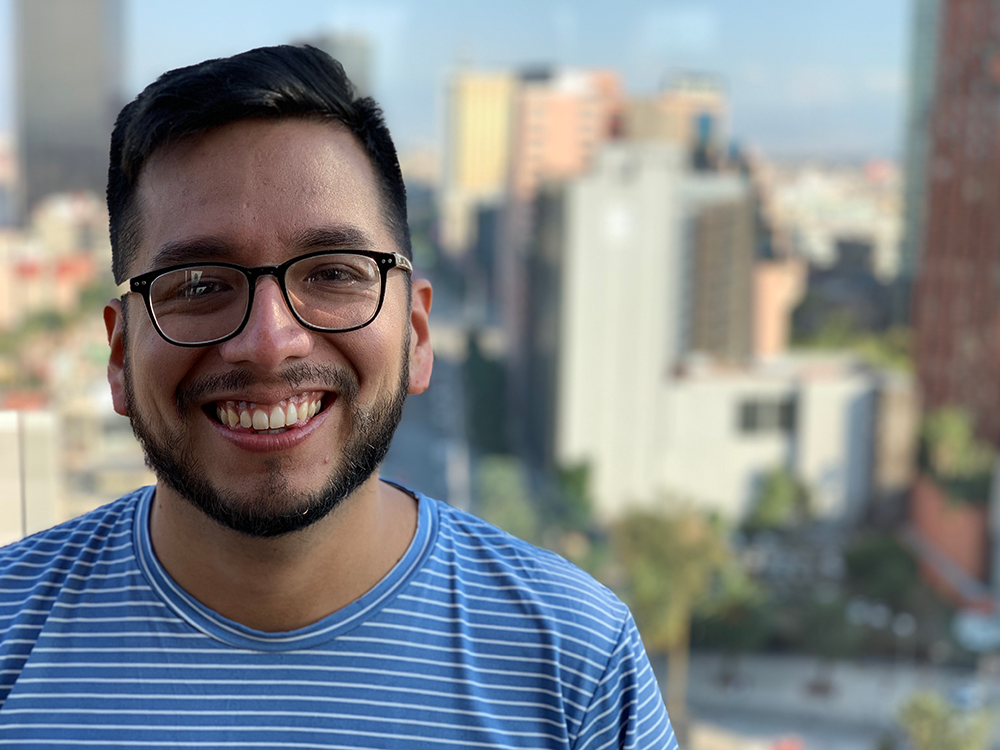
Horacio Ramos Cerna
Peru, 2016, 2021
Horacio Ramos Cerna is a PhD candidate in art history at the Graduate Center, City University of New York, who specializes in Latin American art. He has been awarded the Patricia Phelps de Cisneros Research Fellowship for Latin American Art (2018), the Andrew W. Mellon Curatorial Fellowship to work at El Museo del Barrio (2017), and two grants from the College Art Association and the Getty Foundation in 2016 and 2021. Ramos has worked as research and curatorial assistant for exhibitions at El Museo del Barrio and the Museo de Arte de Lima. Currently, he teaches art history at Brooklyn College, City College, and Lehman College. He received his BA in philosophy and his MA in art history at the Pontificia Universidad Católica del Perú.

Juliana Ribeiro da Silva Bevilacqua
Brazil, 2019
Juliana Ribeiro da Silva Bevilacqua is an assistant professor and Queen’s National Scholar in the Arts and Visual Culture of Africa and the African Diaspora at Queen’s University, Kingston, Ontario, Canada. She studied at the University of São Paulo, where her PhD dissertation was on the Museu do Dundo in Angola (1936–61). From 2004 to 2014 she worked as a researcher at the Museu Afro Brasil in São Paulo. She has collaborated with different museums in Brazil researching African art and Afro-Brazilian art collections, including the Museu de Arte de São Paulo and the Museu de Arqueologia e Etnologia at the University of São Paulo. In 2018 she was a visiting professor at the Universidad de Los Andes, Bogota, Colombia, in the Connecting Art Histories program sponsored by the Getty Foundation.
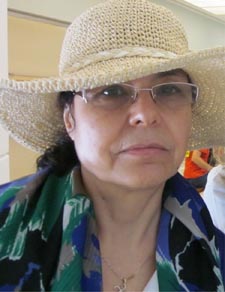
Malvina Rousseva
Bulgaria, 2012
Malvina Rousseva is an architect and architectural historian at the Institute for Art Studies at the Bulgarian Academy of Sciences who specializes in the investigation, documentation, and preservation of immovable cultural heritage. Her scholarly expertise encompasses the material and spiritual culture of the ancient Mediterranean, with a particular focus on Thracian architecture. She is the author of Thracian Cult Architecture (published in both Bulgarian and English in 2000), Thracian Tomb Architecture in the Bulgarian Lands, V–III c. BCE (2002), and Methodology for the Scholarly Investigation of Thracian Architecture: Analysis, Interpretation, Symbolism (2013). Rousseva has taught at several universities and leads a professional course organized by French and Bulgarian cultural institutions to train architects in conservation and preservation. As head of the Archaeology Department at the former National Institute for Monuments of Culture, she spearheaded work on many Bulgarian archaeological and architectural sites. She holds MA, RA, and PhD degrees in the history and theory of architecture from the University for Architecture, Construction, and Geodesy, Sofia, Bulgaria.
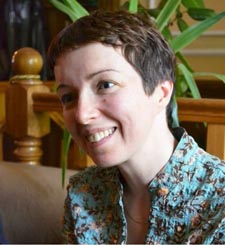
Hanna Rudyk
Ukraine, 2012
Hanna Rudyk is a deputy director and a curator of Islamic arts at the the Bohdan and Varvara Khanenko National Museum of Arts in Kyiv, Ukraine. In 1998 Rudyk graduated from the National University of Kyiv-Mohyla Academy (BA and MA, cultural studies), and in 2001 she completed a PhD in art history at the same university. Her work at the Khanenko National Museum (since 2002) has included curating its permanent exhibition of Islamic art (as of 2006). Her research has been presented in articles and catalogues, as well as in exhibitions: Muhamaddan Blue: Cobalt іn Asian and European Ceramic Traditions (2005), The Land of Fire and Carpets: Azerbaijan Carpet-Weaving from 17th–20th Century (2007), Suzani, an Amulet of Life: 18th–20th Century Embroidery Art of Uzbeks and Tajiks (2011), and The Sense of Her Life: Varvara Khanenko—An Art Collector, a Philanthropist and a Museum Founder (2013). As deputy director (appointed 2011), Rudyk is responsible for new approaches to interpretation and presentation of premodern collections for contemporary audiences.
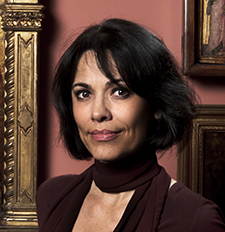
Dóra Sallay
Hungary, 2012
Dóra Sallay is curator of early Italian paintings at the Museum of Fine Arts (Szépművészeti Múzeum) in Budapest; she was formerly a curator at the Christian Museum (Keresztény Múzeum) in Esztergom. She studied in Grand Rapids, Michigan, Prague, and Budapest, and holds degrees in art history, English, and medieval studies. Her primary research interests are early Italian—especially Sienese—panel paintings. She is the author of Corpus of Sienese Paintings in Hungary, 1420–1510 (2015), and numerous articles and other publications on fifteenth-century Sienese art. Her research interests also include the reception and collection history of early Italian paintings. In the latter field she has published Raffaele Bertinelli és reneszánsz képtára (2009), a book on the Renaissance painting collection of Bertinelli (1802–1878), which now forms part of the Christian Museum. Her awards and scholarships include grants from the Hungarian state (2001, 2004, 2006), the Kunsthistorisches Institut in Florence (2007, 2008), and at Villa I Tatti, The Harvard Renaissance Center for Italian Renaissance Studies (2011).
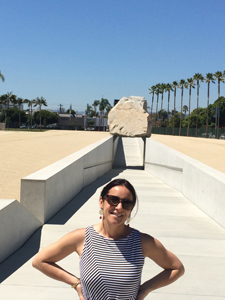
Olaya Sanfuentes Echeverría
Chile, 2016
Olaya Sanfuentes Echeverría earned a bachelor’s degree in history from the Pontificia Universidad Católica de Chile in Santiago, an MA from Georgetown University in Washington, DC, and a PhD in art history from the Universitat Autònoma de Barcelona in Spain. She is a professor at the Institute of History, a part of the Department of History, Geography, and Political Science at the Pontificia Universidad Católica. Sanfuentes’s current research focuses on devotional practices involving art, especially religious statues used in festivals and rites in honor of the saints and virgins in Andean communities, as well as similar practices related to Nativity cribs. More generally, Sanfuentes is interested in practices surrounding visual representations, history, and material culture, and how communities deal with cultural heritage.
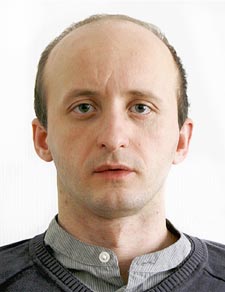
Andrey Shabanov
Russia, 2015
Andrey Shabanov received an MA in art history from the European University at Saint Petersburg, Russia (EUSPB) in 2004. In 2013 he completed his PhD at the Courtauld Institute of Art, University of London, with the thesis “Re-Presenting the Peredvizhniki: A Partnership of Artists in Late Nineteenth-Century Imperial Russia.” A monograph based on the thesis was published in Russian in 2015. Shabanov is an associate research fellow in the Department of Art History at EUSPB, where he teaches graduate courses inspired and informed by his work at the Courtauld; these courses aim to meaningfully link current Russian art historical scholarship practice with modern Western academic research standards and knowledge on the subject. Shabanov’s broader research interests are Russian and Western art of the second half of the nineteenth century and the twentieth century, contemporary art, the social history of art, the sociology of art, modern institutional art history, and the history of art exhibitions in Europe.
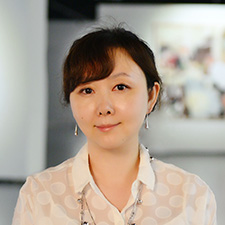
Shao Yiyang
China, 2015, 2017
Shao Yiyang is a professor of art history and theory, and deputy dean of the School of Humanities at Central Academy of Fine Art, Beijing. She received her PhD in art history and theory in 2003 at the University of Sydney, Australia. Her teaching and research focus on Western art history, theory, and Chinese modern and contemporary art. She has published widely on art history and theory, including the books Art after Postmodernism, Beyond Postmodernism, and Modern European Art History since the Seventeenth Century, all published in Chinese by Peking University. She published the article “Whither Art History” in the June 2016 issue of The Art Bulletin. Yiyang presented papers on Chinese modern art at the 32nd Congress of the Comité international d’histoire de l’art (CIHA) in Melbourne in 2008, the 33rd CIHA Congress in Nuremburg in 2012, and the 29th conference organized by Verband Deutscher Kunsthistoriker (Association of German Art Historians) in Regensburg in 2007.
Shao Yiyang is a professor of art history and theory, and deputy dean of the School of Humanities at Central Academy of Fine Art, Beijing. She received her PhD in art history and theory in 2003 at the University of Sydney, Australia. Her teaching and research focus on Western art history, theory, and Chinese modern and contemporary art. She has published widely on art history and theory, including the books Art after Postmodernism, Beyond Postmodernism, and Modern European Art History since the Seventeenth Century, all published in Chinese by Peking University. She published the article “Whither Art History” in the June 2016 issue of The Art Bulletin. Yiyang presented papers on Chinese modern art at the 32nd Congress of the Comité international d’histoire de l’art (CIHA) in Melbourne in 2008, the 33rd CIHA Congress in Nuremburg in 2012, and the 29th conference organized by Verband Deutscher Kunsthistoriker (Association of German Art Historians) in Regensburg in 2007.
Olabisi Silva
Nigeria, 2012
Olabisi Silva was the founder and artistic director of the Centre for Contemporary Art in Lagos, Nigeria. One of the most influential curators in her country, she died in 2019.
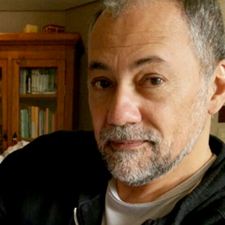
Paulo Silveira
Brazil, 2016
Paulo Silveira holds bachelor’s degrees in fine arts (with qualifications in drawing and painting) and in communication studies from the Universidade Federal do Rio Grande do Sul in Porto Alegre, Brazil. He earned an MA and a PhD in visual arts, with an emphasis in art history, theory, and criticism, from the same university. His graduate studies included doctoral research in France at the Université Paris 1 Panthéon-Sorbonne. Silveira is a professor of art history at the Instituto de Artes at the Universidade Federal do Rio Grande do Sul. His research interests include the formal and contextual study of the artistic process, the intellectual and artistic foundations of contemporary art, intermedia, perception of works of art, aesthetics, rhetoric of artist’s publications, and methodology. Silveira is a member of the Brazilian Committee of Art History and the National Association of Researchers in Fine Arts (serving on its committee for history, theory, and criticism).
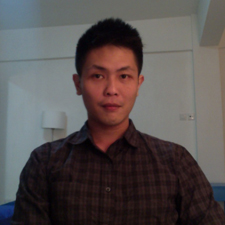
Simon Soon
Malaysia, 2018
Simon Soon is a researcher and senior lecturer in the Visual Art Department of the Cultural Centre, University of Malaya, in Kuala Lumpur, Malaysia. He completed a PhD in art history at the University of Sydney with a dissertation titled, “What Is Left of Art? The Spatio-Visual Practice of Political Art in Indonesia, Singapore, Thailand, and the Philippines, 1950s–1970s.” Soon studies comparative modernities in art, urban histories, and art historiography, and writes on various topics related to twentieth-century art across Asia. He is also a coeditor of Narratives of Malaysian Art, vol. 4. He is the Penang field director for the Power Institute, the University of Sydney’s Site and Space of Southeast Asia, funded by the Getty Foundation’s Connecting Art Histories Initiative. He is also an editorial member of Southeast of Now: Directions in Contemporary and Modern Art, a peer-reviewed journal published by the National University of Singapore Press, and a team member of the Malaysia Design Archive.
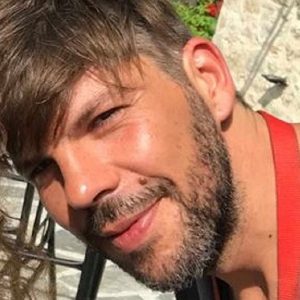
Marko Stamenkovic
Serbia/Albania, 2019
Marko Stamenkovic, born in the former Yugoslavia, is an associate curator of the ZETA Contemporary Art Center in Tirana, Albania. He is an art historian and transcultural theorist with a strong interest in the decolonial politics of race, ethnicity, and sexuality. Over the past decade, he has been working primarily in the field of contemporary visual arts as a freelance curator, critic, and writer focused on the intersection of visual thinking and social theories, political philosophies, and cultural practices of the marginalized and the oppressed. He holds a PhD in philosophy from Ghent University (Belgium), where he worked on questions of sacrifice, self-sacrifice in protest, and suicide to explore the relationship between human mortality and politico-economic powers on the darker side of democracy, from a perspective of the global South. He is a member of AICA (International Association of Art Critics) and IKT (International Association of Curators of Contemporary Art).

Romuald Tchibozo
Benin, 2018
Romuald Tchibozo is an art historian from Benin. He received his PhD in 2003 from the Humboldt University of Berlin with a dissertation titled “Art and Arbitrary: A Study of the African Contemporary Art Reception in the West; The German Case from 1950 to the Present Day.” Currently, he is a senior lecturer of art history in the Archaeology and History Department, Faculty of Arts and Humanities, National Institute of Art, Archaeology and Cultural Craft, at the University of Abomey-Calavi, Benin. He also teaches art history at the Centre Régional d’Action Culturelle of Lomé in Togo. In 2013–14, Tchibozo was a fellow in the Art Histories and Aesthetic Practices program, an initiative of the Max-Planck-Institute at the Forum for Transregional Studies in Berlin. His research focuses on African contemporary art in the former German Democratic Republic, the evolution of contemporary art in Benin, and heritage issues, such as the Yoruba Gèlèdè Society and the practice of art history.

Saurabh Tewari
India, 2020
Saurabh Tewari received a BArch in 2008 from the Sushant School of Art and Architecture, Gurgaon/GGSIP University, Delhi, India, and an MDes in 2010 from the Industrial Design Center, Indian Institute of Technology Bombay. As a doctoral candidate in the Design Program at the Indian Institute of Technology Kanpur, he is attempting to map out and understand the shifting role of design in postcolonial India within the broader narrative of national development. Currently an assistant professor of design in the School of Planning and Architecture in Bhopal, Tewari has developed a curriculum that includes design history, design culture, and design studies. Ultimately, his goal is to develop South Asia’s first postgraduate program in design history and studies. He views his role in two ways: as a design historian in South Asia exploring and constructing scholarly approaches to design history, and as a South Asian scholar in the design history community voicing the potential of decolonized approaches to the field.
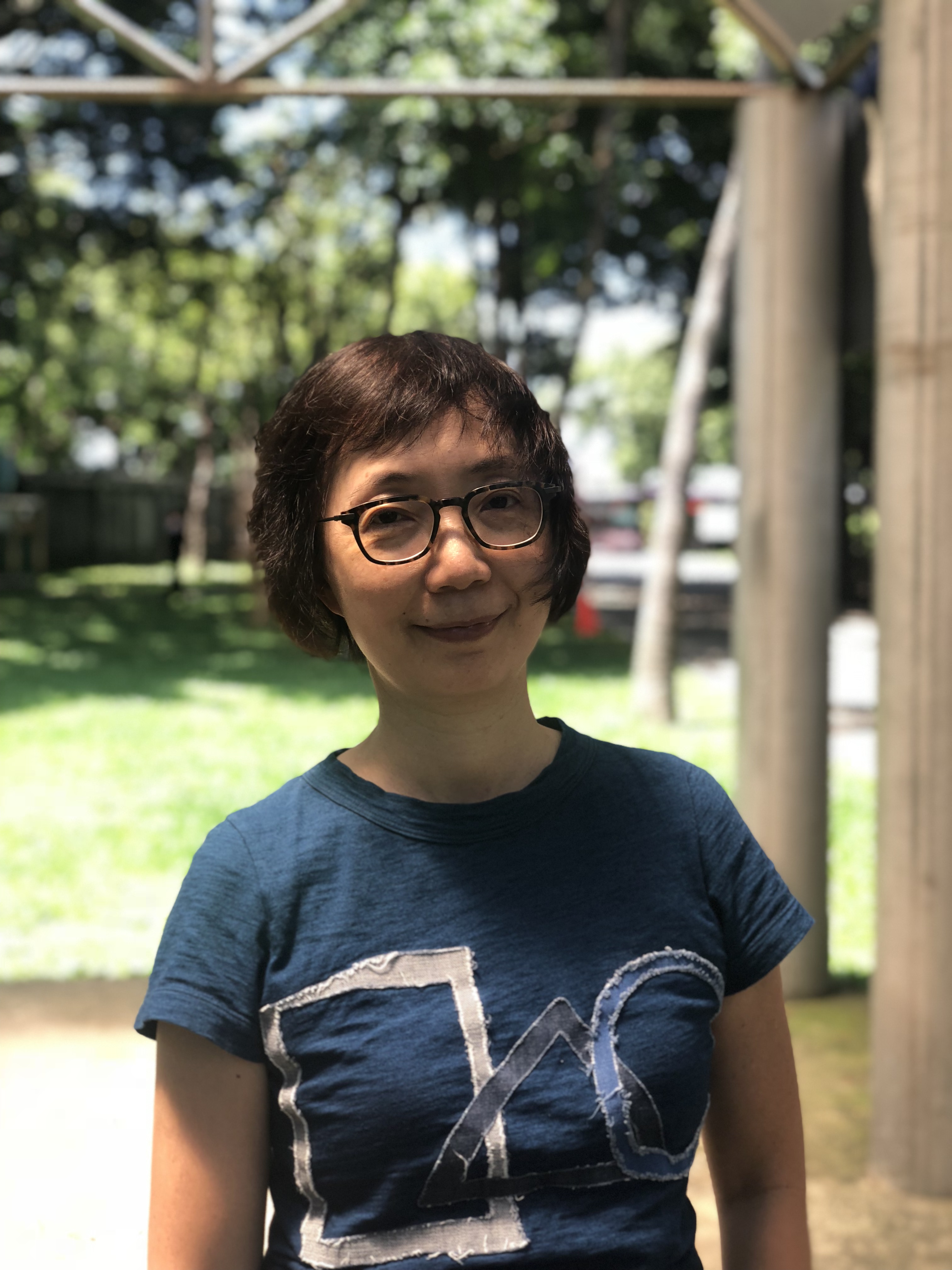
Shao-chien Tseng
Taiwan, 2012
Shao-chien Tseng received her doctorate in art history from the University of Iowa. She is a professor at the Graduate Institute of Art Studies at National Central University (NCU) in Taiwan. Her research interests focus on sports culture and bodyscape, representations of the city and landscape, and modernist exoticism. Her articles on modern and contemporary art have appeared in The Art Bulletin, History of Photography, Oculus, Journal of Art Theory and Practice, and Journal of Taipei Fine Arts Museum, among others. She edited the book Approaches to Visual Studies and several exhibition catalogues on Taiwanese art. She has also written chapters for books including Art and Identity, In/Sight: Visual Culture and Aesthetics (Shu Lin, 2011), Perspectives on Degas (Routledge, 2016), and Romantic Legacies: Transnational and Transdisciplinary Contexts (Routledge, 2019). She has also served as co-convenor in arts for the Ministry of Science and Technology, research fellow at the Academia Sinica, director of the NCU Art Center, and assistant curator at the National History Museum.
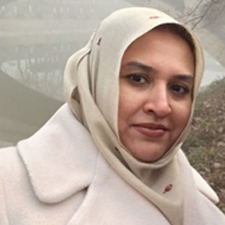
Sarah Umer
Pakistan, 2018
Sarah Umer is an associate professor in the University College of Art and Design, University of Punjab Lahore, the oldest university in Pakistan. She previously taught at the Lahore College for Women, the largest women’s university in Pakistan and one of the largest in South Asia. In addition to teaching undergraduate and graduate students, Umer organizes seminars and workshops with universities and museums on a national and international level and writes about art and art history. Her research interests include the study of ancient civilizations and religions, predominantly in the South Asia. In 2016 Umer received a PhD from Lahore College for Women with a dissertation on the religious beliefs of the Indus Valley people. In early 2017, as a recipient of a Charles Wallace Fellowship, she probed this topic further at SOAS (School of Oriental and African Studies), University of London.
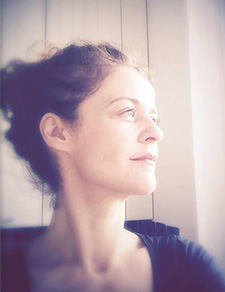
Sandra Uskoković
Croatia, 2016, 2017
Sandra Uskoković, a scholar of modern and contemporary Central and Eastern European art, is an associate professor at the University of Dubrovnik, Croatia. She holds an MA from George Washington University in Washington, DC, and a PhD from the University of Zagreb, Croatia. She has worked as a research fellow at ICCROM, UNESCO, and US/ICOMOS, and received art research awards from the Graham Foundation, Samuel H. Kress Foundation, and Getty Trust. Uskoković has published four books. Her most recent, Art Dialogues in Public Space, was just published by UPI2Mbooks. She has also published numerous conference papers and research articles in her home country and abroad. A visiting scholar at universities in Europe, Asia, and North America, her research interests include art criticism, modern and contemporary art, urban and cultural theory, performing arts, and heritage studies. She is an expert member of the ICOMOS committee on modern heritage and a scientific committee member of the Association of Critical Heritage Studies.
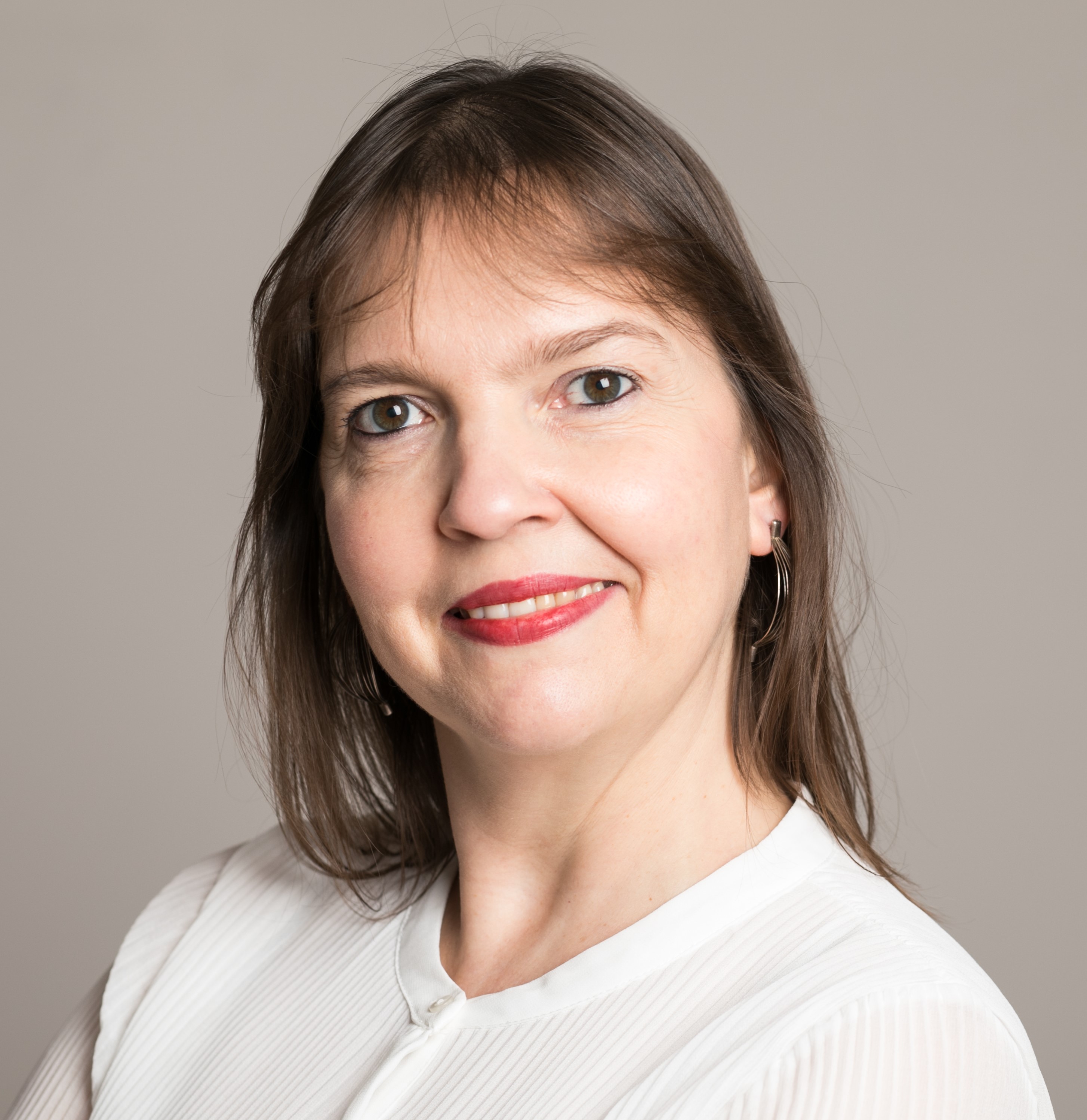
Viviana Usubiaga
Argentina, 2019
Viviana Usubiaga holds a PhD in art history from the Universidad de Buenos Aires (UBA) in Argentina. She is an associate professor of contemporary art at the Universidad Nacional de San Martín and an assistant professor of modern and contemporary art history at UBA. Usubiaga is also a researcher of the Consejo Nacional de Investigaciones Científicas y Técnicas (CONICET), on temporary leave because currently she is the cultural heritage manager at the Ministry of Culture in Argentina. She is a board member of the Centro Argentino de Investigadores de Arte. Her fields of interest include visual arts, literature, and museum studies, focusing on the political impact of transnational circulation of artistic images and texts during socially traumatic periods, including dictatorships and post-dictatorships in South America. Usubiaga is the author of Imágenes inestables: Artes visuales, dictadura y democracia en Buenos Aires (Edhasa, 2012).
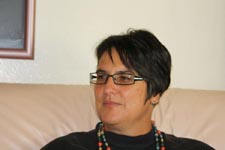
Lize van Robbroeck
South Africa, 2015
Lize van Robbroeck is a professor of visual studies at Stellenbosch University. She completed undergraduate studies (honors) and a master’s degree at the University of the Witwatersrand. Her doctoral work at the University of Stellenbosch dealt with the discursive reception of modernist Black artists’ work in white South African writing. Apart from numerous articles and shorter reviews, she has published twenty-four chapters in books and was instrumental in the planning and execution of Visual Century, a four-volume revisionist history of South African art in the twentieth century. She was invited to host a colloquium on settler art history at the Clark Art Institute in Williamstown in 2015. She was a research fellow at Birmingham University’s Institute for Advanced Research and an Ampersand Fellow in New York. The bulk of her research focuses on the colonial encounter, postcoloniality, and race in South African visual arts.

Nóra Veszprémi
Hungary/UK, 2015, 2020, 2021
Nóra Veszprémi is a research associate for the European Research Council–funded project Continuity/Rupture: Art and Architecture in Central Europe 1918–1939 at Masaryk University, Brno, Czech Republic. She is also an honorary research fellow at the University of Birmingham, UK, where she recently completed a project on museums in Austria-Hungary 1867–1918. In 2014–15 she taught at the Institute of Art History at Eötvös Loránd University, Budapest, Hungary, where she also received her PhD in 2013. Veszprémi specializes in nineteenth- and early twentieth-century Central European art. A former curator at the Hungarian National Gallery, she is the author of a monograph on romanticism and popular taste in mid-nineteenth-century Hungary (in Hungarian) and coauthor (with Matthew Rampley and Markian Prokopovych) of two volumes on museums in Austria-Hungary: The Museum Age in Austria-Hungary: Art and Empire in the Long Nineteenth Century (Penn State University Press, 2021); and Liberalism, Nationalism and Design Reform in the Habsburg Empire: Museums of Design, Industry and the Applied Arts (Routledge, 2020).
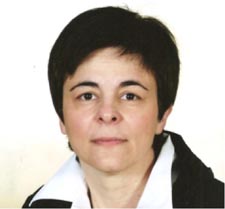
Marina Vicelja-Matijasic
Croatia, 2013
Marina Vicelja-Matijasic is a full professor in the Department of Art History, Faculty of Humanities and Social Sciences, and a director of the Center of Iconographic Studies at the University of Rijeka, Croatia. She has been a principal investigator and participant in several projects researching medieval patrimony in the northern Adriatic region. She has received several fellowships, among them a Fulbright Fellowship at Princeton University in 2001–2. The organizer of an annual international conference on iconographic studies, Vicelja-Matijasic has introduced iconology studies in Croatia. She also serves as the editor of IKON: Journal of Iconographic Studies. Vicelja-Matijasic is involved in various committees and boards working on strategies for developing art history as a discipline in Croatia and Europe. Her main research interest lies in the field of iconography and iconology, with a special focus on the early Christian and early medieval periods.

Giuliana Vidarte
Peru, 2020, 2021
Giuliana Vidarte received a BA in Latin American literature and an MA in art history from the Pontificia Universidad Católica del Perú. In 2013 she was part of a curatorial intensive course in Northern Ireland organized by the New York–based Independent Curators International. In 2014 she received a travel grant to participate in the annual meeting of the International Committee for Museums and Collections of Modern Art (CIMAM) in Qatar. From 2015 to 2018, she was the curator of Bufeo: Amazonía+Arte, a project for the research and dissemination of Amazonian art. Vidarte has developed exhibition projects about the relationship between visual arts and literature, the rewriting of history based on the recovery of unofficial discourses, and artistic production in the Peruvian Amazon. She served as curatorial assistant for the Peruvian pavilion at the 58th Venice Biennale in 2019. Currently, she is chief curator and head of exhibitions at the Museo de Arte Contemporáneo in Lima.
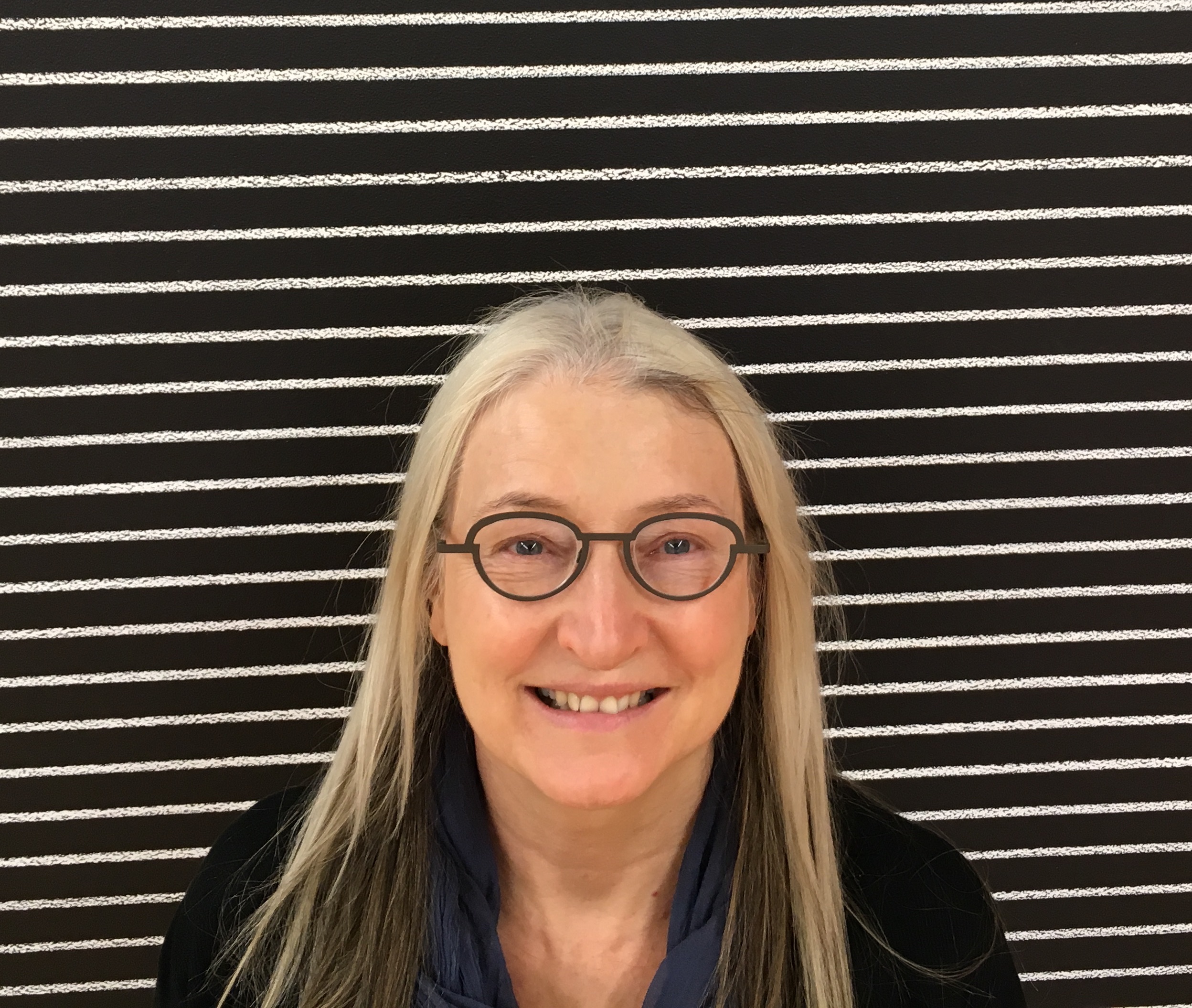
Karen von Veh
South Africa, 2013
Karen von Veh is a professor of art history and theory, and head of the Department of Visual Arts at the University of Johannesburg. She serves on the boards of the South African Visual Arts Historians Association and AICA (International Association of Art Critics), and on the editorial board of the journal De Arte. She studied at the University of the Witwatersrand, obtaining BA (honors) and master’s degrees, and received a PhD from Rhodes University. The title of her PhD thesis is “Transgressive Christian Iconography in Post-Apartheid South African Art.” Von Veh has written many articles, book chapters, and several books, and delivered papers at national and international conferences on this and related subjects with reference to works by Diane Victor, Wim Botha, Conrad Botes, and Lawrence Lemaoana, among other South African artists. Her research interests include contemporary South African art, religious iconography, gender studies, and postcolonial studies in identity and culture.

Ahmed Wahby
Egypt, 2014
Ahmed Wahby graduated in 1992 with a degree in architecture from Ain Shams University in Cairo. In 2000 he received an MA in Islamic art and architecture from the American University in Cairo, where he had worked as a research assistant for almost four years. In 2008 he was awarded his PhD in Islamic art, architecture, and archaeology from the Oriental Department of the Otto-Friedrich University, School of Human Sciences, Art, and Culture, in Bamberg, Germany. Wahby is at present an associate professor of design theory and has been teaching since 2008 at the German University in Cairo, Faculty of Applied Sciences and Arts. He served as the faculty’s vice dean for nine years, in addition to heading several faculty committees. He has often published in local and international journals. Wahby has proudly led the new Luxor visual identity and branding project, a national mission commissioned by the Egyptian state.

Julia Waite
New Zealand, 2020
Julia Waite is the curator of New Zealand art at the Auckland Art Gallery Toi o Tāmaki, New Zealand’s largest art museum. She has worked on a number of large-scale exhibitions including the fifth Auckland triennial, If you were to live here . . . (2013), and Space to Dream: Recent Art from South America (2016). Her research interests are focused on the development of modern art in New Zealand and its connections with other peripheral modernisms. In 2015 she curated the exhibition Freedom and Structure: Cubism and New Zealand Art 1930–1960, which toured throughout New Zealand, and published an associated catalogue. She cocurated the major survey of New Zealand’s preeminent abstract painter, Gordon Walters: New Vision, which opened at Auckland Art Gallery in 2018. Most recently, Waite has cocurated Louise Henderson: From Life, the first comprehensive retrospective of the French-born New Zealand artist. She holds an MA in art history (First Class) and an MA in museum and heritage studies.
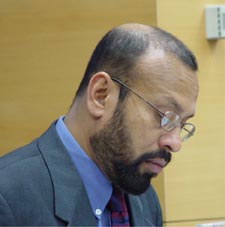
Jagath Weerasinghe
Sri Lanka, 2012
Jagath Weerasinghe is an artist as well as a professor at the Postgraduate Institute of Archaeology of the University of Kelaniya, Sri Lanka, where he teaches and researches art history, history and theory of archaeology, and heritage preservation. He received his BFA from the Institute of Aesthetic Studies, University of Kelaniya, and an MFA from American University, Washington, DC. He has exhibited widely, including the 4th Asian Art Show (1994), Fukuoka, the Asia Pacific Triennial (1999), and the Singapore Art Biennale (2006). He is a founding member of the Theertha Artists Collective and the National Trust of Sri Lanka. He is also a conservator of mural paintings and has restored important mural sites, including the bomb-damaged murals of the Sacred Tooth Relic Temple, Kandy, Sri Lanka; the Brumidi Frescoes in the US Capitol; and the Shahi Hamaam Murals, Lahore, Pakistan. He is a recipient of numerous awards and fellowships at home and abroad.
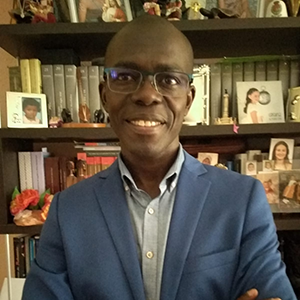
Jean-Arsène Yao
Ivory Coast, 2020
Jean-Arsène Yao received a PhD in Latin American history from the Universidad de Alcalá, Spain, in 2002. His scholarship focuses on teaching Spanish in the African Diaspora, particularly with Black people in Argentina. Currently professor of Latin America and Caribbean studies at the Université Félix Houphouët-Boigny (Ivory Coast) and visiting professor at the Universidad de Alcalá and the Universidad de Granada (Spain), his teaching interests include Hispanic American culture and civilization; race, class, and ethnicity in Latin America; and Afro-Hispanic history. A special interest is the visual representation of people of African descent in art history and visual studies. Yao has conducted research in Argentina, Colombia, Cuba, Ecuador, and Uruguay. He has published widely, including five books, several book chapters, and over twenty articles in juried journals of research. Since 2016 he has been the founder-coordinator of the Group of Latin American Studies and Research (https://grelat-ufhb.org/).
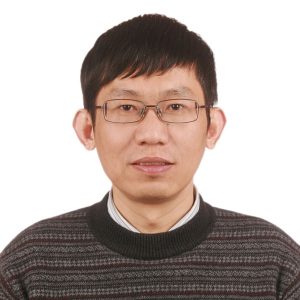
Jian Zhang
China, 2019
Jian Zhang was born in Hangzhou, China, and earned his PhD in art theory and history from the China Academy of Art, Hangzhou. He is a professor of art history at the School of Art and Humanities as well as the chief librarian of the Academy Library at the same university. His present research focuses on expressionism (formalism) in modern art historiography, as well as the problem of its modernity. He is the author of Life of the Visual Form of Art, The History of Western Modern Art, and An Alternative Story: Expressionism in the Western Modern Art Historiography, and also the translator of the Chinese edition of Wilhelm Worringer’s Form in Gothic, Heinrich Wölfflin’s The Sense of Form in Art: A Comparative Psychological Study (Italien und das deutsche Formgefühl), and Conrad Fiedler’s On Judging Works of Visual Art.



